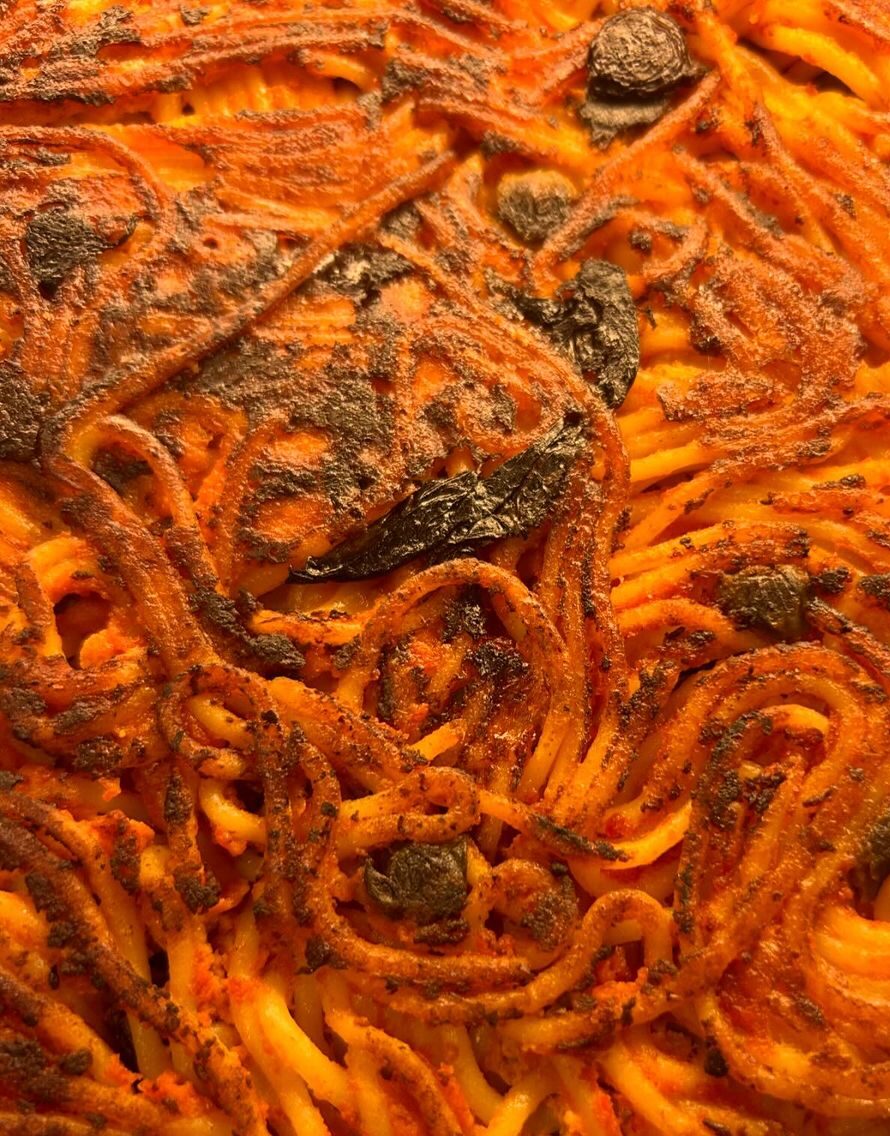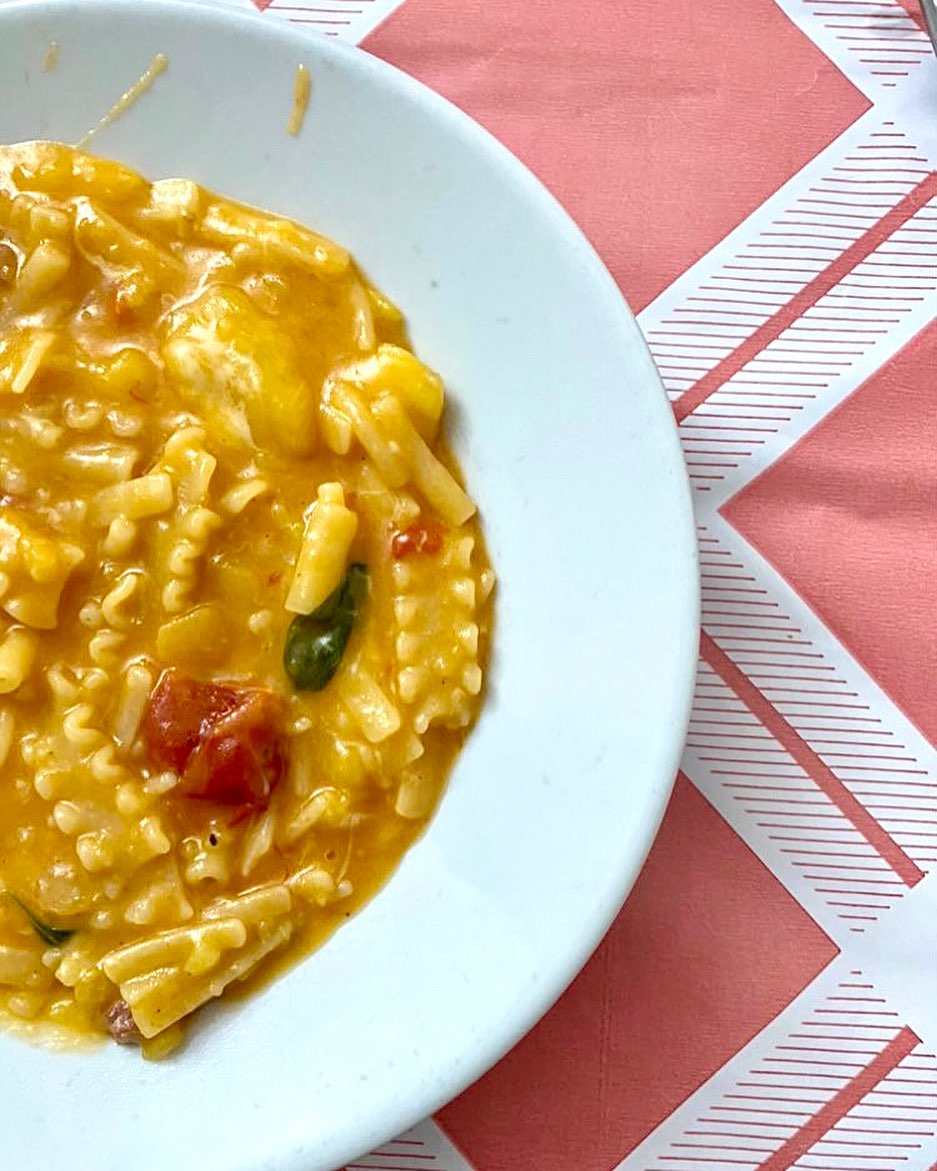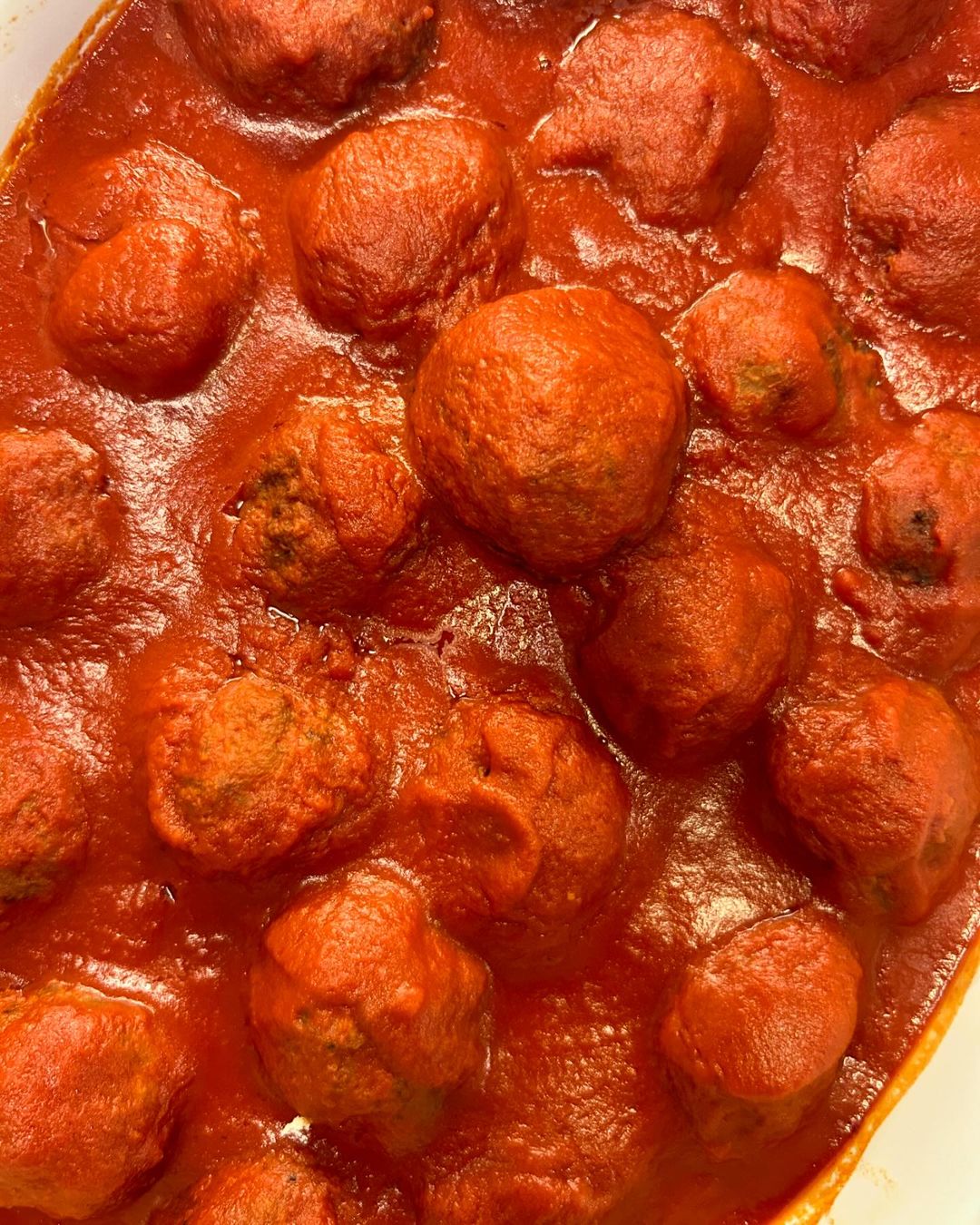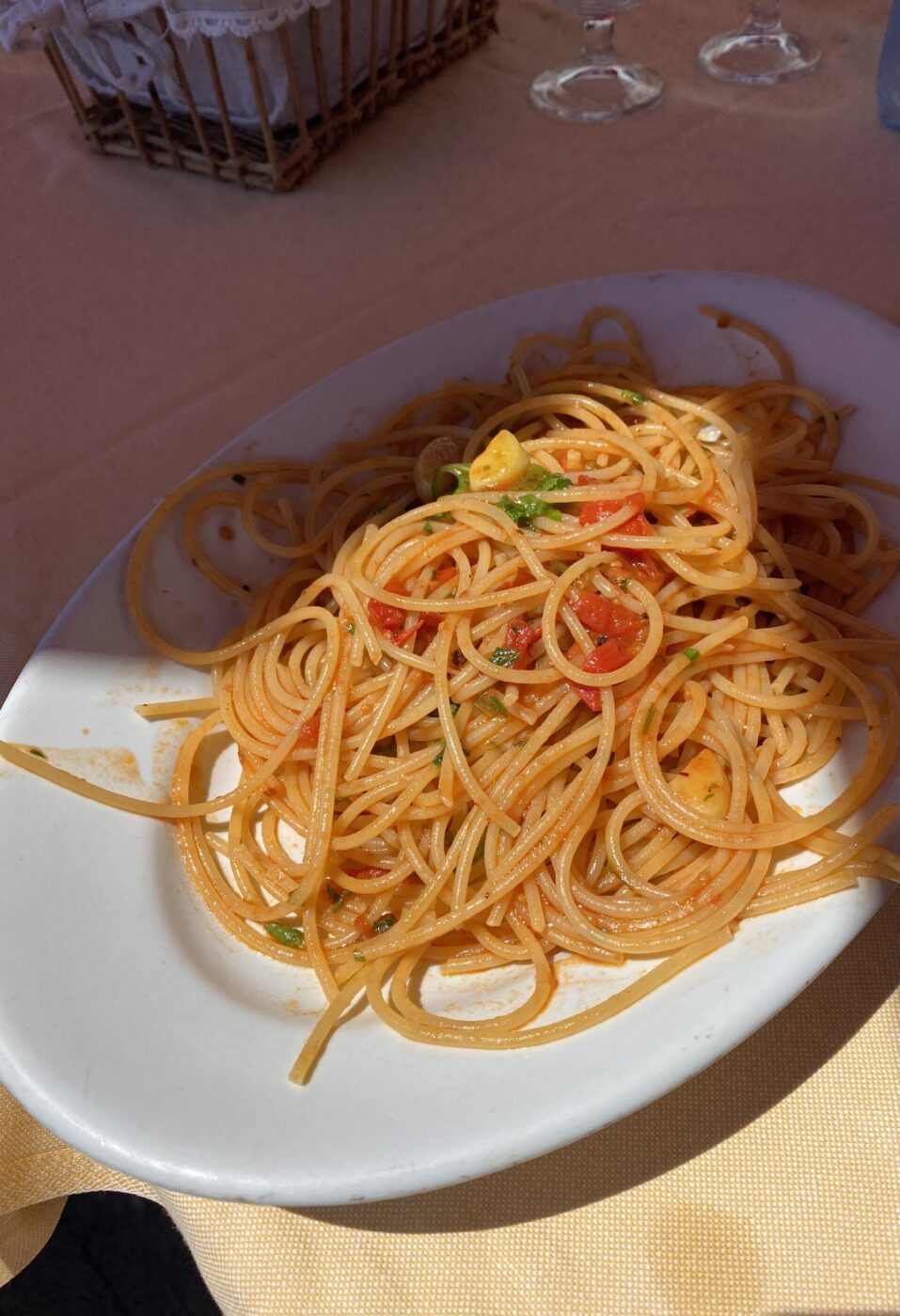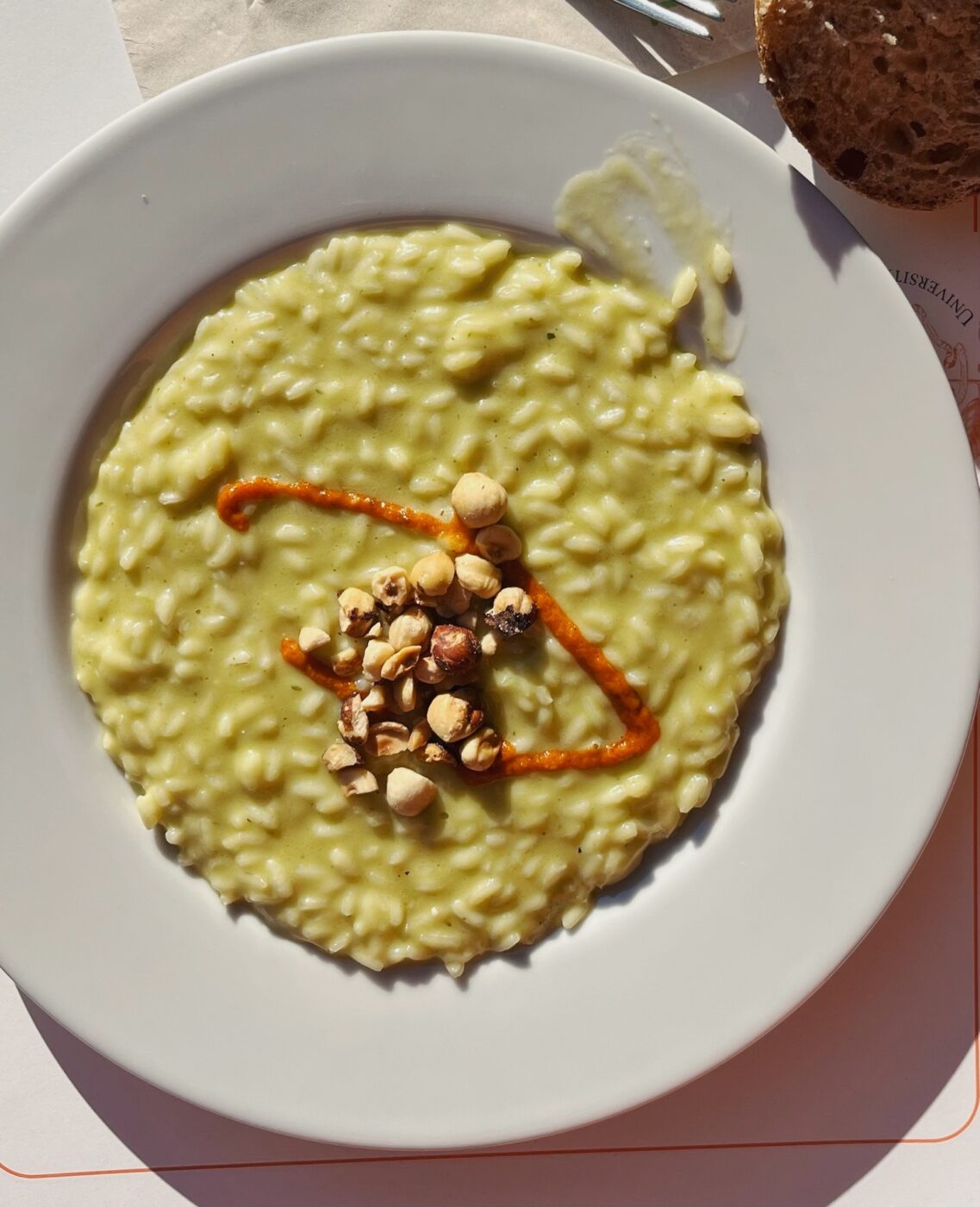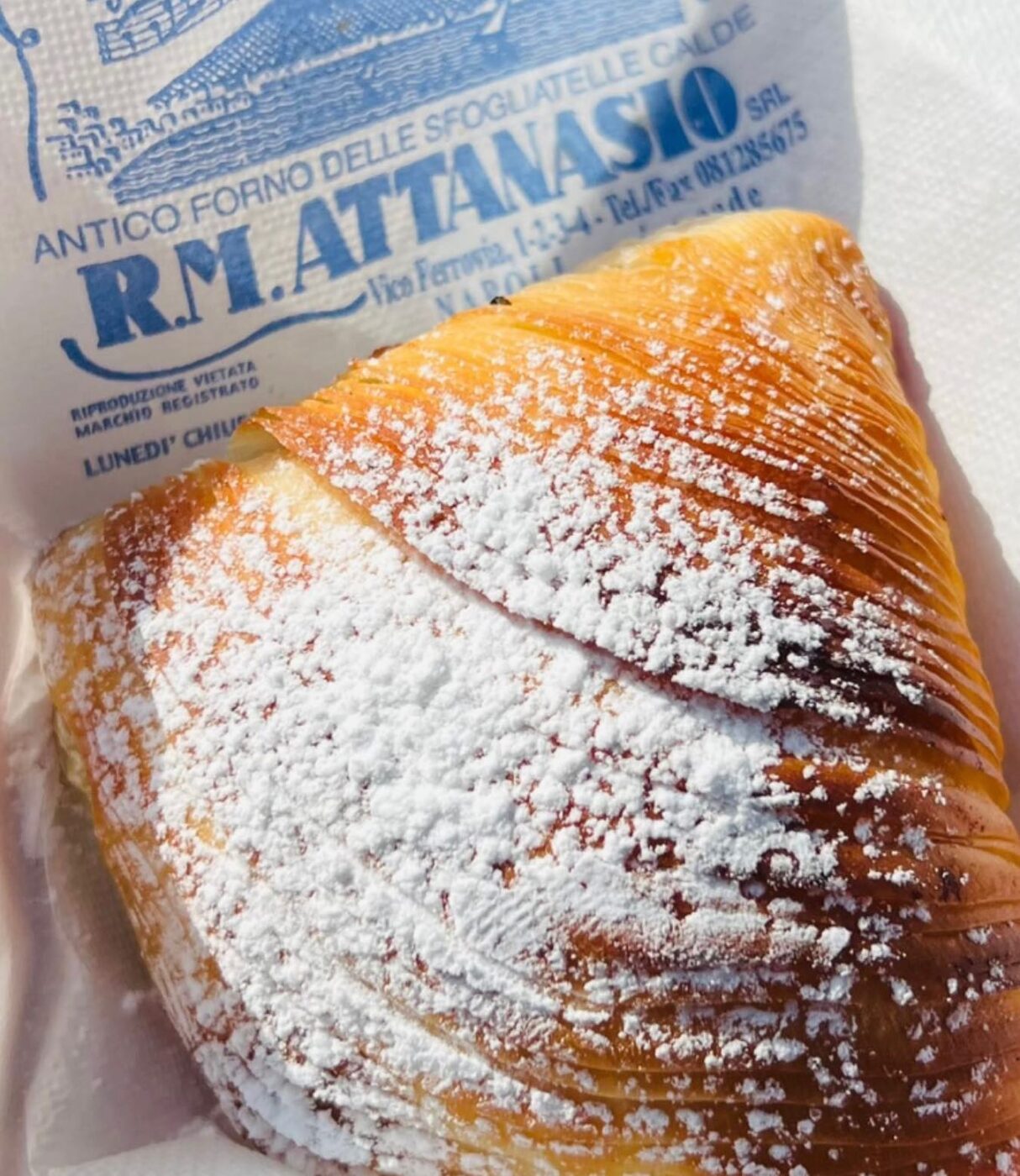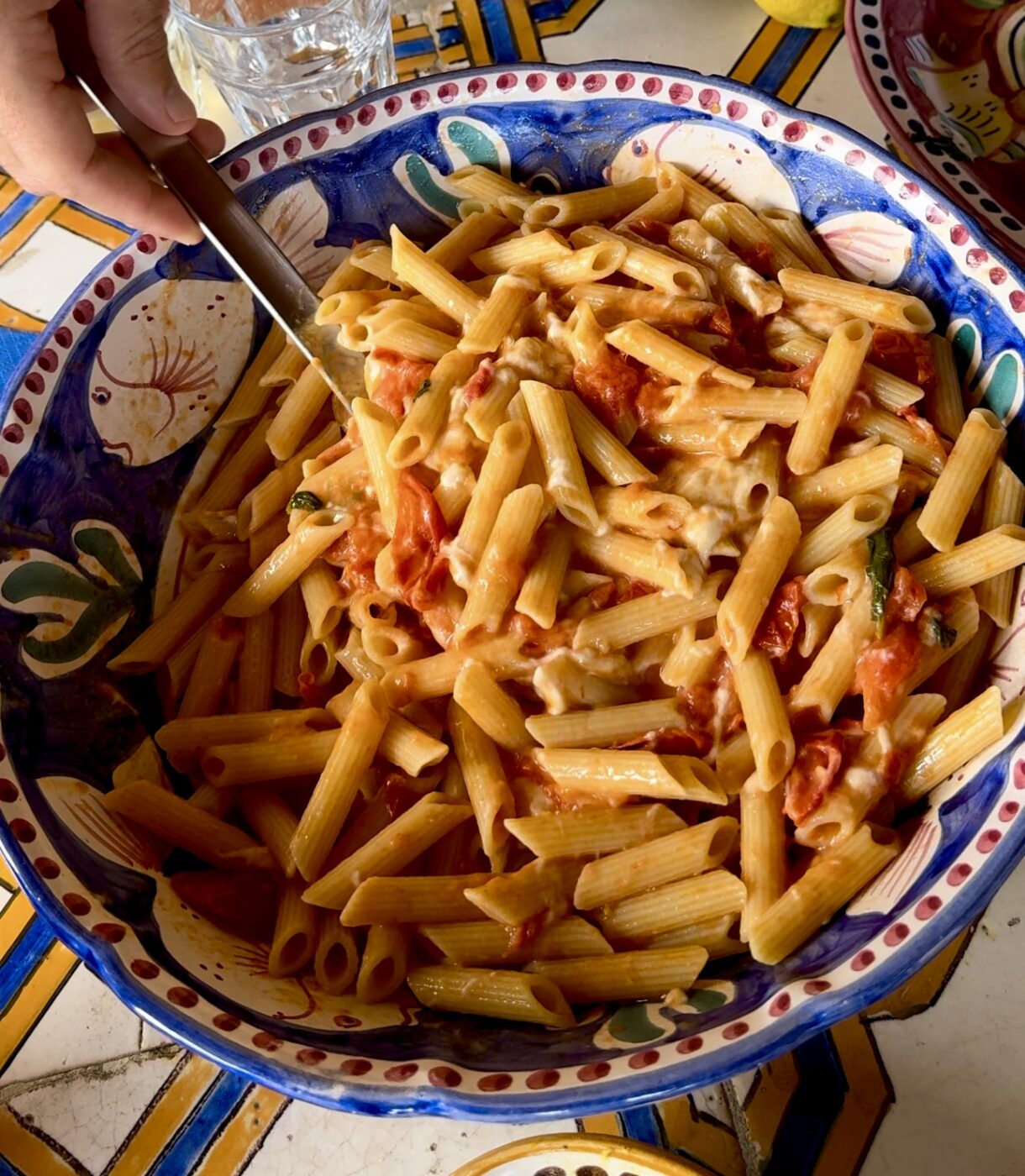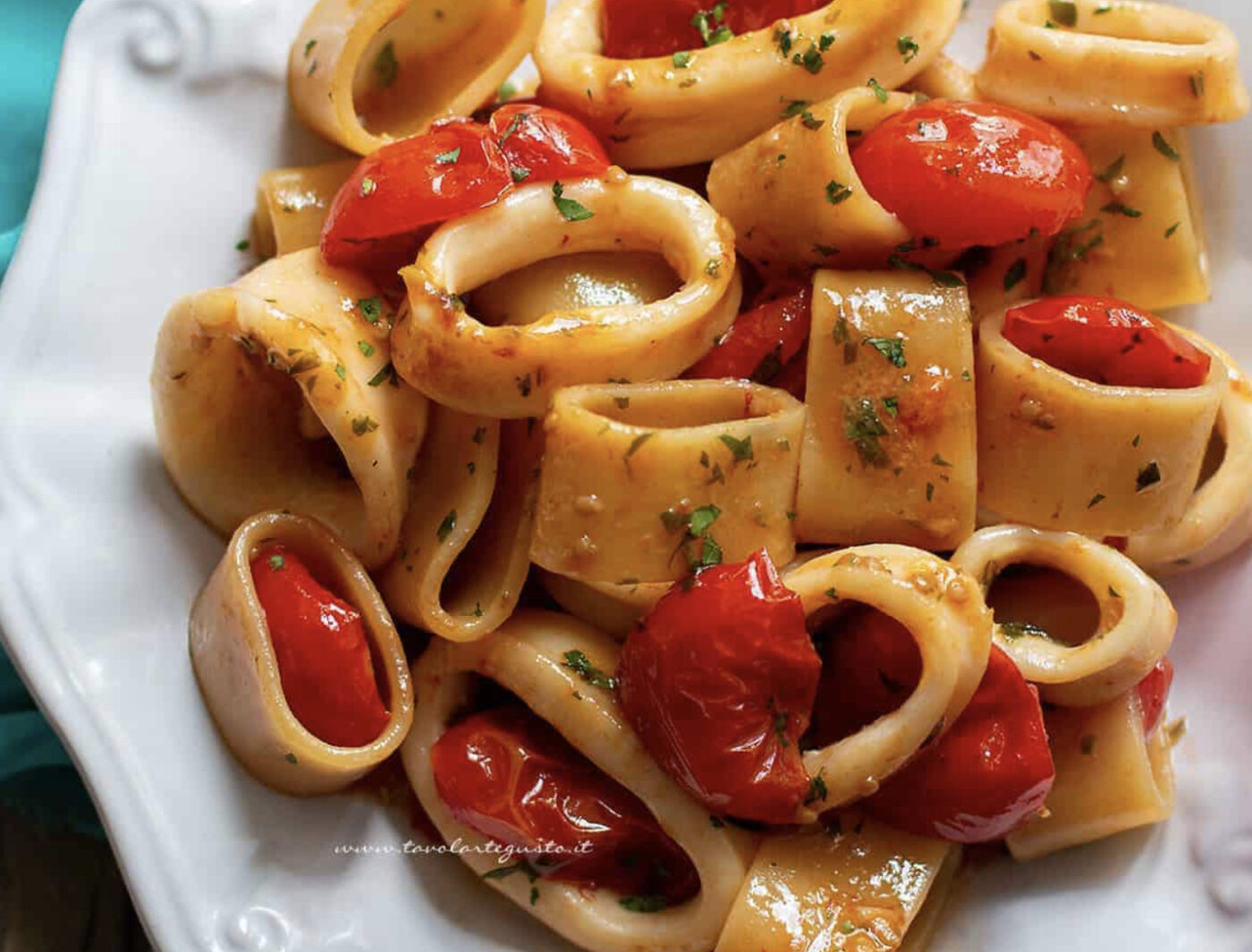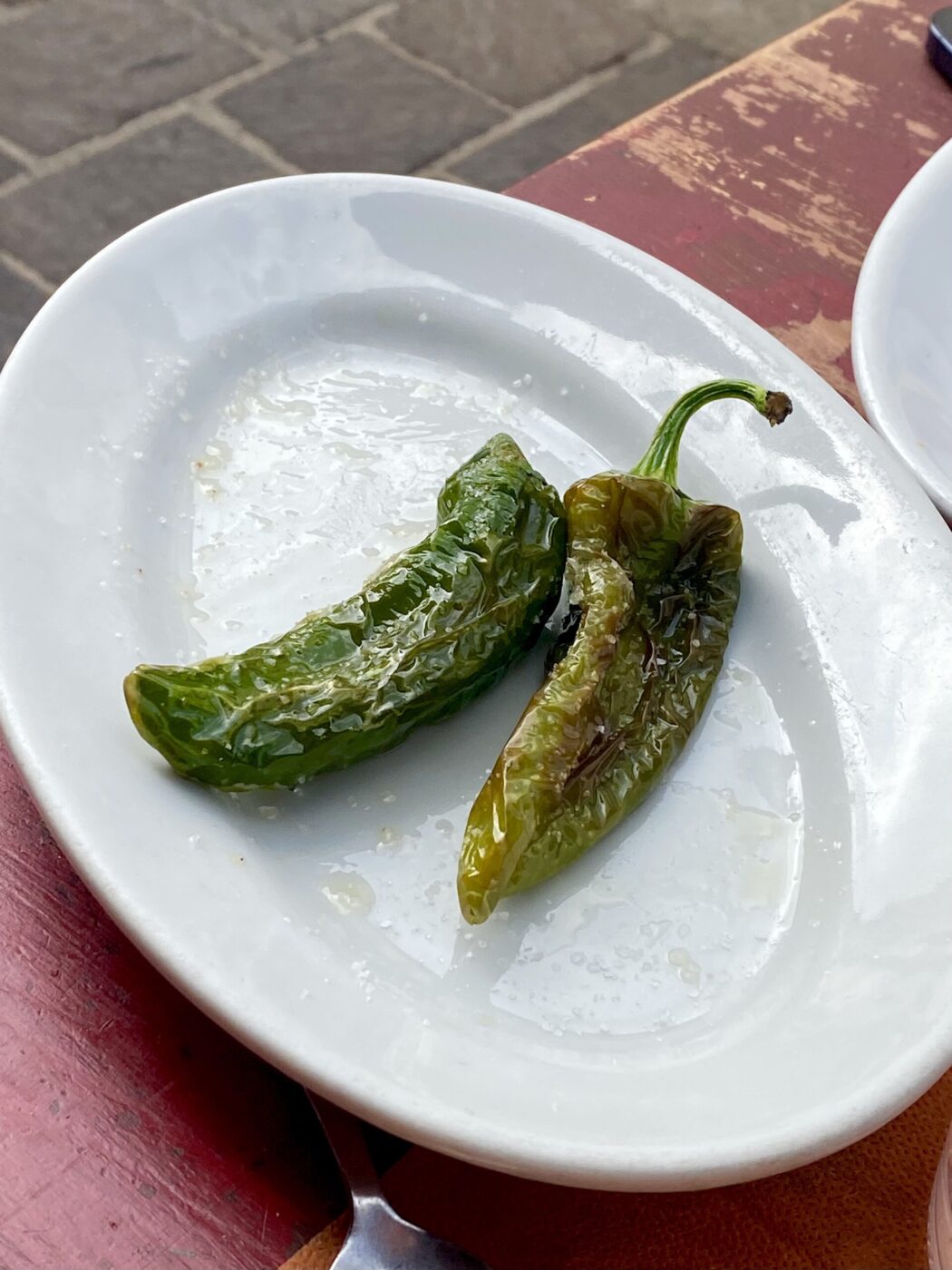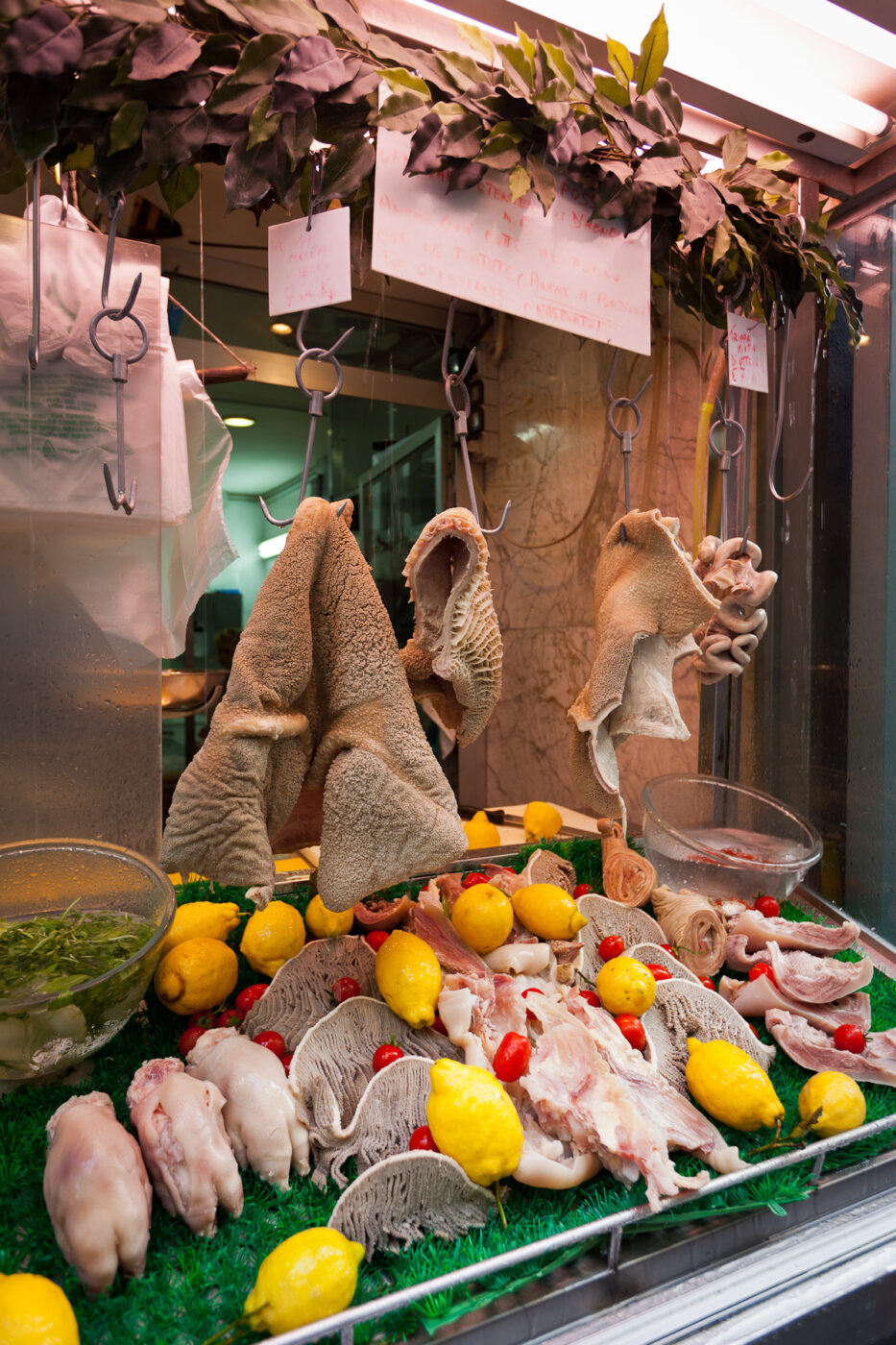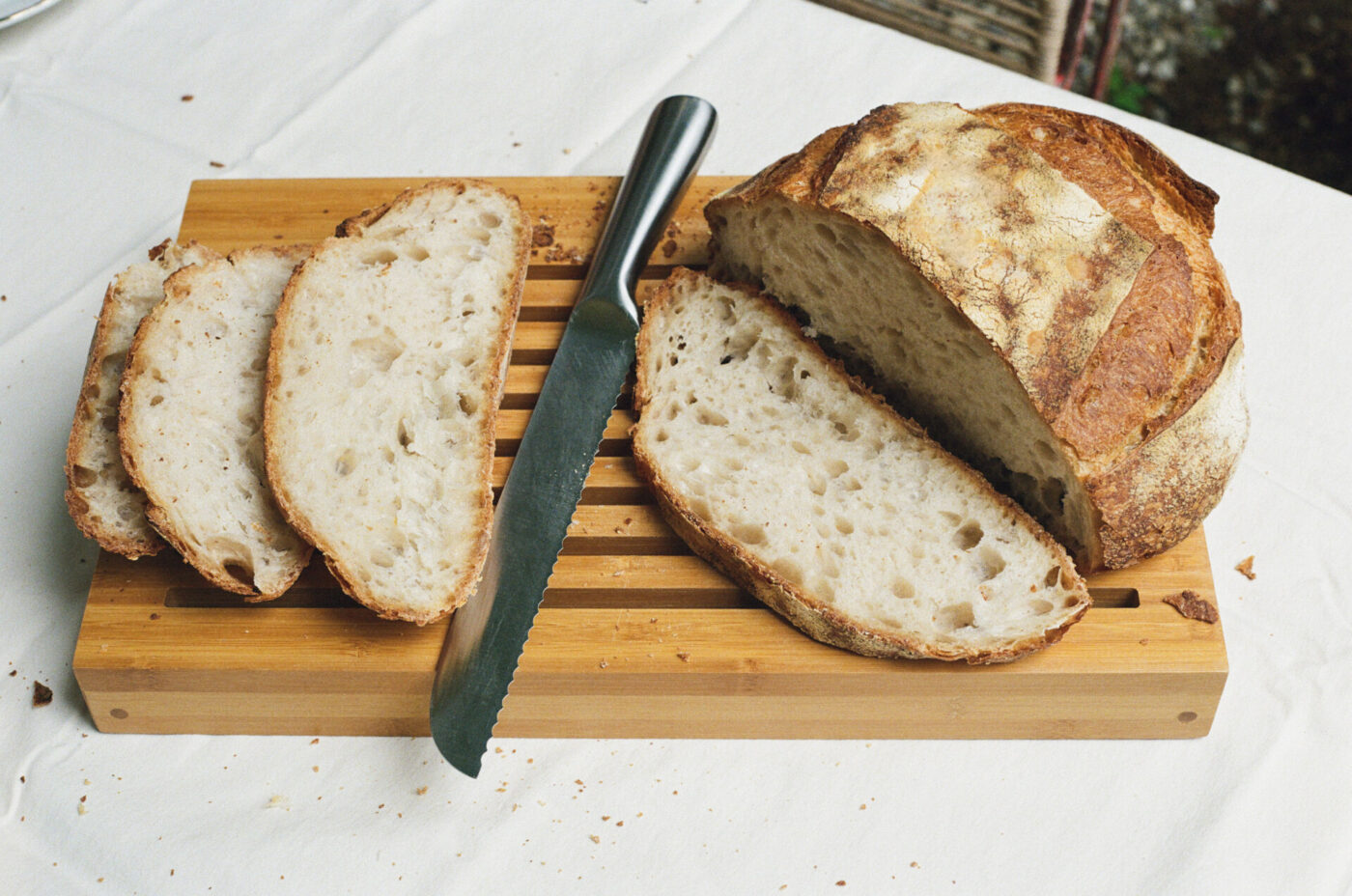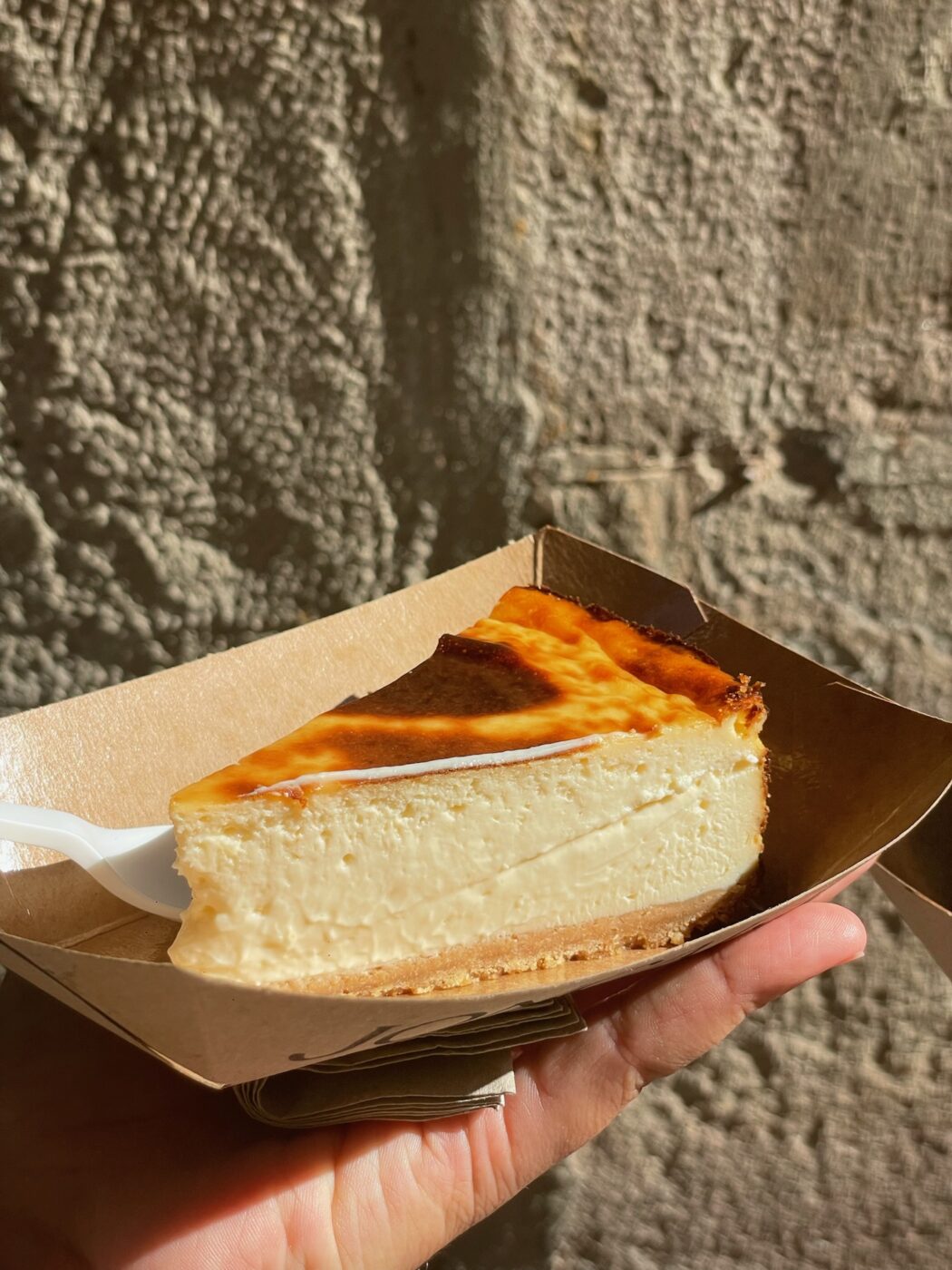Adversity breeds innovation, and that’s something that Naples proves true. Rising out of the ashes of Vesuvius, Campania’s capital really marches to the beat of its own drum: here, there’s an entirely new set of traffic laws, religion (and curses) are taken very seriously, and the culinary canon is so strong and flavorful that I was forced to up Italy Segreta’s usual 20 Foods list to 30.
When it comes to food, Neapolitans have major bragging rights. They invented pizza, are responsible for the adoption of tomatoes into Italian cuisine, and single handedly launched the production and consumption of dried pasta in this country. If these three things don’t promise a superb cuisine, we don’t know what to tell you. But beyond this, their prime seaside location means seafood dishes that can convert even the most devout seafood hater (spaghetto a vongole); their thrifty mindset means waste-not-want-not dishes with flavors so elegant you’d certainly be surprised at their origin (puttanesca); and their quick adoption of “foreign” ingredients–remember the tomato?–has led to dishes that are delightfully diverse in texture, composition, and taste (ziti alla genovese, gattò di patate, etc.).
The major port city has been colonized by quite a variety of cultures over the years, from the Greeks to the French to the Spanish, and each has certainly left a mark on the city and its food. But it’s the Neapolitans’ distinct touch–one that doesn’t shy away from frying or adding a bit of cheese–that has really turned the region’s humble protagonists of veggies and carbs into a lineup of soul-stirring, flavor-packed dishes that doesn’t even fit into this list of 30 (imagine if I’d had to pick just 20!).
Though fritti and pizza rightfully reign supreme, here are 30 reasons why Naples is so much more than just the queen of carbs.
If you’re looking instead for restaurants in Naples, you can find the list of my favorites here.
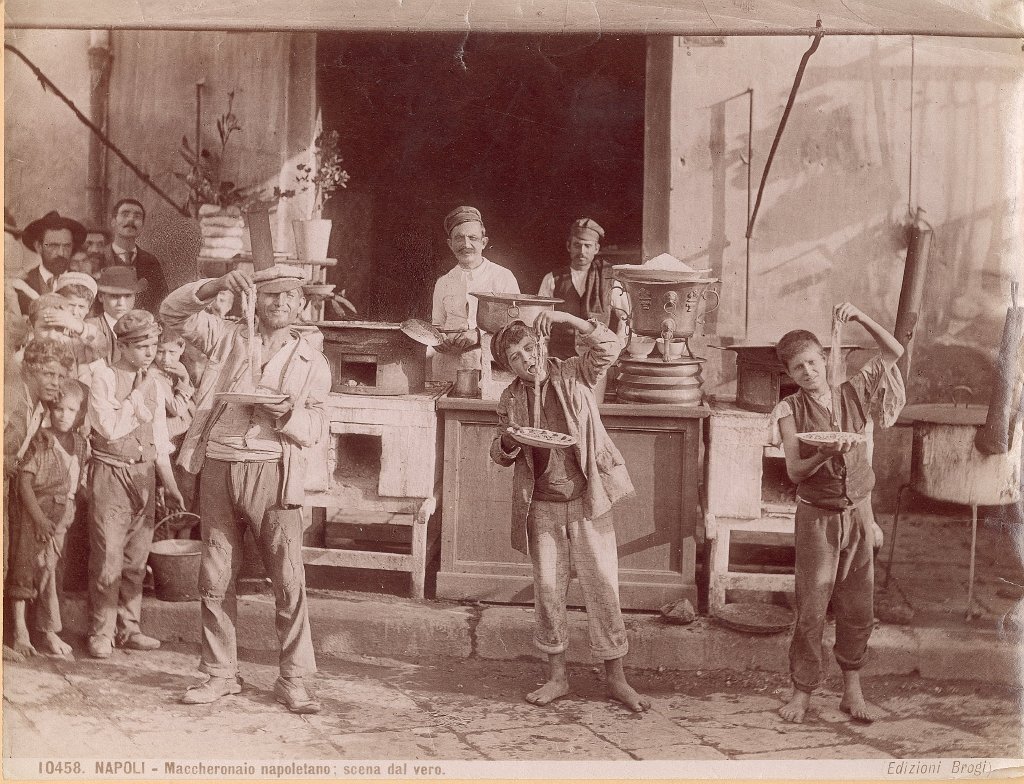
PIZZA
If you come to Naples and don’t try pizza, it’s like going to the beach and not swimming, or going to Paris and not eating a croissant, or falling in love and not kissing your lover. I could go on and on, but the moral of the story is that pizza is the undisputed monarch of the Campanian capital. Thick crust, chewy dough, a droopy center–this is pizza Napoletana. Ninety seconds in a hot wood-fired oven is all it takes for the dough to char, the fresh mozzarella to melt, and the tomatoes to yield their sweetness. It’s no exaggeration that billions of variations, even for vegans and celiacs, now exist all across the world, but in Naples, it’s best to stick to the simple marinara or margherita–the latter invented here in the late 19th century for Queen Margherita herself. So, grab your fork and knife (no pre-sliced pies here), and dig in.
Where to Try Our Favorite Version: Pizzeria Diego Vitagliano
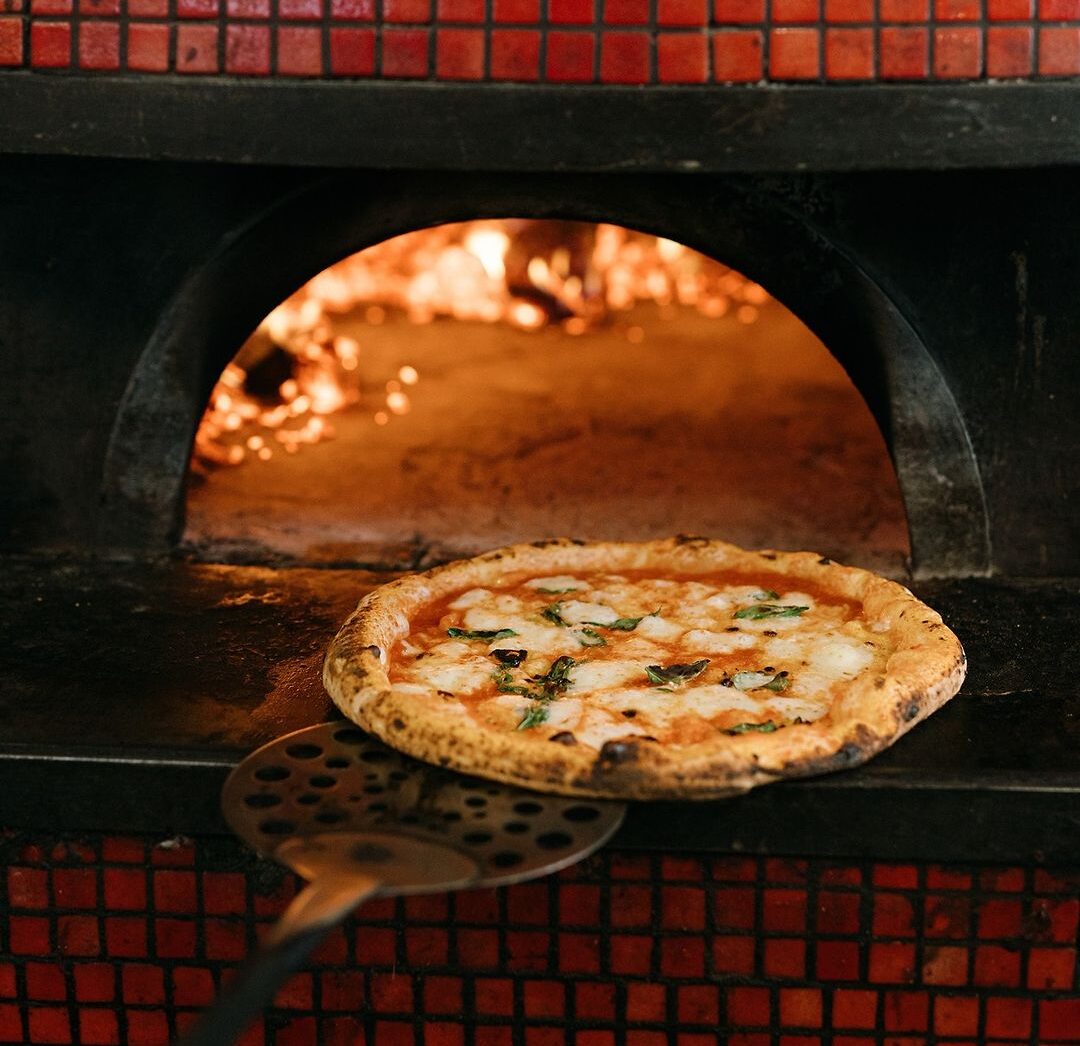
Pizza Margherita; Courtesy of Starita
ZITI ALLA GENOVESE
This rich, beef and onion-based sauce translates to “the girl from Genova”, but it really has nothing to do with Liguria’s capital (we’ll get to the name in a minute). Due to the long cooking required, this sumptuous sugo is often cooked on Sundays or holidays, and the tomato-less ingredient list stands apart from the rest of the city’s recipes. Each family and restaurant swear by a different mix of beef cuts, but there’s no room for discussion about the onions: the only option is Ramata Di Montoro Onion, an IGP (protected origin) product from the province of Avellino. It’s easy to make, relying on slow, slow cooking the meat and mountain of thinly sliced onions on a low flame for at least five hours, sometimes for the entire day. The juicy sauce is then mixed with candele or ziti and topped with finely grated Parmigiano Reggiano and a few basil leaves. Back to the name–a few hypotheses exist as to why “the girl from Genova” made her way south, the first being the similarities to a form of lasagna with bianco ragù from the namesake port city. Another says it’s because eateries near the port served the popular dish to Genovese sailors who frequented the area during the Aragonese era (15th century). A more plausible theory suggests that the name is linked to Swiss mercenaries–from the Geneva region–who were present in Naples when the recipe appeared; their cuisine heavily featured onions, and the name is similar to the word Geneva (Genève in French). Alla genovese is actually one of the oldest sauces in Italian cuisine, recorded in the Liber de Coquina during the 13th to 14th centuries. If you can’t make it to Naples, find a recipe from Neapolitan-favorite restaurant Mimì Alla Ferrovia here.
Where to Try Our Favorite Version: Mimì Alla Ferrovia, Salumeria Upnea

Ziti alla Genovese; Courtesy of Mimì alla Ferrovia
PUTTANESCA
Tomatoes, garlic, olives, capers, anchovies, peperoncino, and lots of parsley on thick spaghetti (the preferred shape over penne rigate or other short pastas), puttanesca, which literally translates to “whorish”, is in this case not derogatory. Instead, it’s a classic “la spaghettata di mezzanotte” from the late 20th century that packs major flavor and a saline punch, just the kind of dish that would lure passersby into a kitchen (or a brothel). Also called aulive e chiapparelle (olives and capers) in Neapolitan dialect, the primo’s peculiar name has a few etymological explanations: some say the bright colors recall the skimpy outfits of those working in brothels, others say a brothel keeper named it since it was a quick, easy dish whipped up in the brothels of Naples’ Spanish Quartiere. The most logical explanation traces the dish back to a version of “maccheroni alla marinara” created by painter Eduardo Colucci, which was later made by his nephew, architect Sandro Petti, at his restaurant ’O Rancio Fellone. Petti blames his uncle for the dish’s crude name.
Where to Try Our Favorite Version: ‘A taverna do re
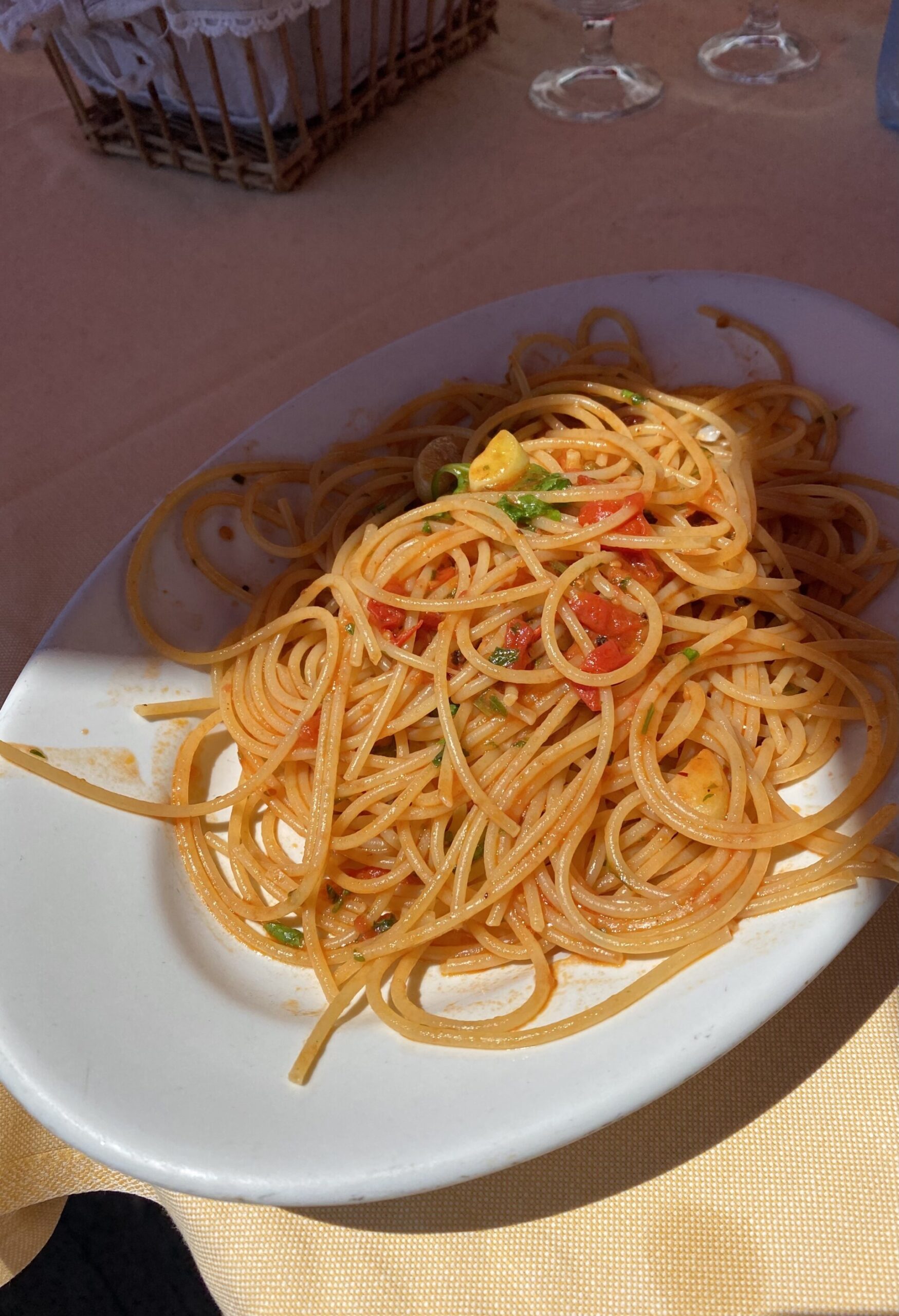
PASTA E PATATE
This might be the most heart-warming recipe on this entire list, found in all Neapolitan homes with slight variations. The base of this pasta stew is simply potatoes and short, dried pasta, typically a mix of shapes to recover all the scraps of pasta packets left to languish in the pantry. It’s a classic one-pot dish: first, a soffritto, then cubed potatoes, then vegetable broth or boiling water, then the pasta. Some add tomato paste, parsley, pancetta, or even mussels, but the most famous version calls for provola to be swirled in towards the end, which makes the dish stringy, rich, and utterly delicious. Find our recipe here.
Where to Try Our Favorite Version: La Locanda del Gesù Vecchio
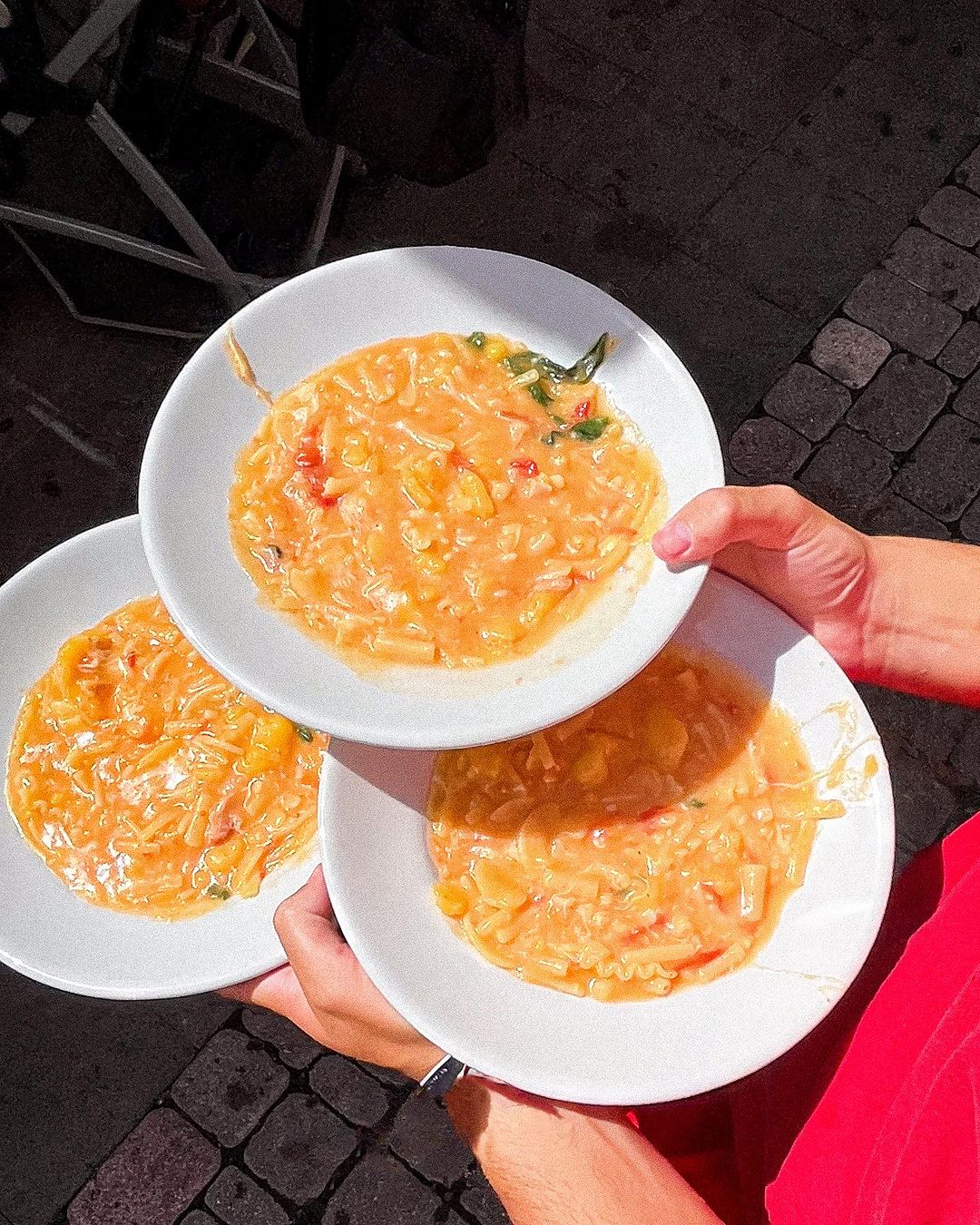
Pasta patate e provola; Courtesy of Trattoria da Nennella
SPAGHETTO A VONGOLE (FUJUTE)
In Naples, we say spaghetto a vongole, not spaghetti con vongole, mind you, and it’s cooked strictly in bianco–without tomato. Created here in 1839, the world-famous dish conjures up images of an estate italiana with just one bite. Simple and briney, the pasta calls for a handful of ingredients: spaghetti, clams, parsley, garlic, and olive oil (check out our recipe here!). Historically, however, clams were expensive, and many Neapolitans couldn’t afford to splurge on shellfish. Necessity sharpens the wit, so spaghetti with fujute (escaped) clams was born. The great Eduardo de Filippo is said to have invented it, claiming he could “taste the sea” with just spaghetti aglio olio e peperoncino and a massive amount of parsley. But it’s not just that, for legend has it that the secret ingredient of this dish was a stone from the ocean’s shore: either boil it with the pasta or fry it with the soffritto, and you’ll magically taste the tea.
Where to Try Our Favorite Version: You’ll find superlative versions of spaghetto a vongole at any fish restaurant, though spaghetto a vongole fujute is best eaten at home.
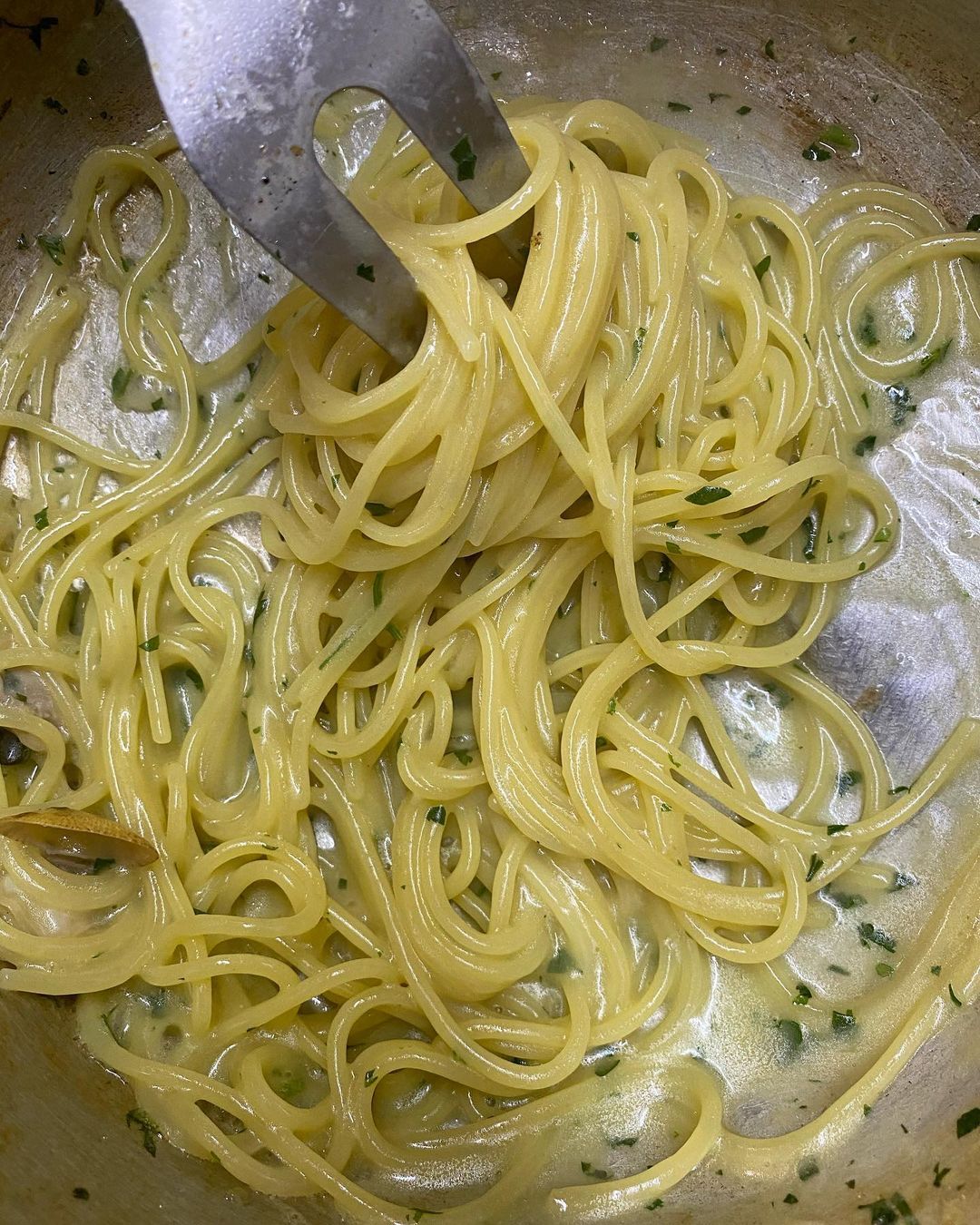
Spaghetti alle Vongole; Ristorante 'A Fenestella
SALSICCIA E FRIARIELLI
In Naples, sausage and friarielli is as iconic a duo as prosciutto e melone, pasta and pomodoro, cacio e pepe. Friarielli are leafy turnip greens typical of Campania, grown mainly in the Vesuvian area. They’re often confused with Pulgian cime di rapa (broccoli rabe), but actually are a different part of the plant–friarelli are the inflorescences (complete flower heads) of the former. These bitter greens were historically discarded by the nobility, and hungry peasants realized they transformed into something delicious when sauteéd with lard, garlic, and peperoncino, and became even better when eaten with pork sausage. Legend says that the original pairing comes from a street vendor who paired the bitter green turnip tops, that were growing in abundance on Vesuvius, with his sausage. Since then, the duo has become quite a superstar, headlining as secondi and on pastas and pizzas across the boot.
Where to Try Our Favorite Version: Salumeria Malinconico
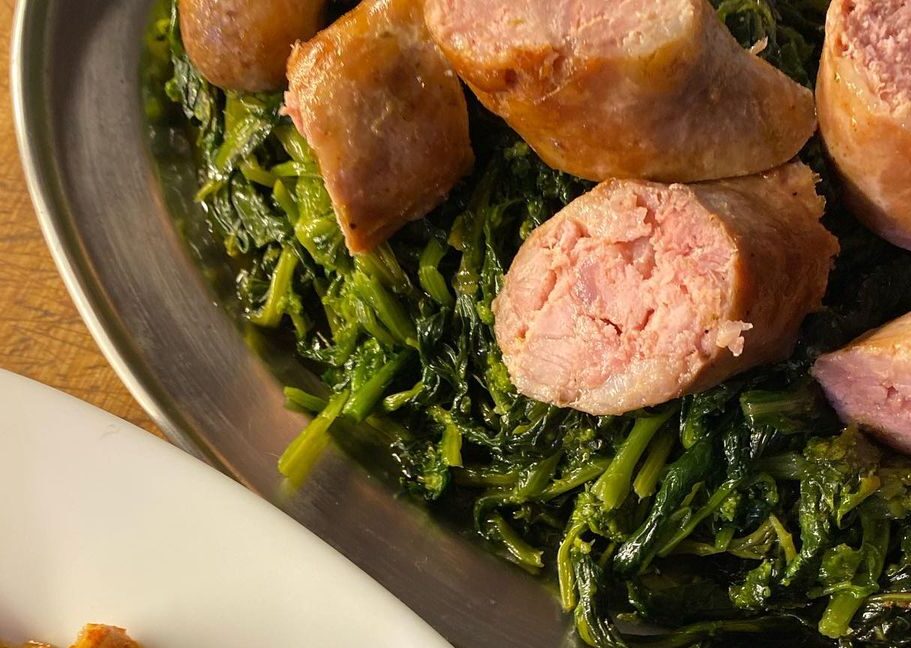
Salsiccia e friarielli; Courtesy of Salumeria Malinconico
PASTA E PISELLI ALLA NAPOLETANA
Pasta e piselli, simply pasta and peas, is not really a recipe exclusive to Naples, but it’s certainly a staple here, with various versions found across the restaurants and homes of the city. The must-haves are peas (fresh or frozen, it makes no difference) and onions sautéed together in olive oil, tossed with a short, dried pasta, and topped with grated Parmigiano Reggiano. To make it “alla napoletana”, you can either sauté pancetta or salame with the peas and onions, or you can stir in a beaten, scrambled egg at the end of cooking. In Naples, the dish must be azzecata–very dry and sticky–so be sure all the water evaporates during cooking. It’s sweet, it’s salty, and it’s a perfect pantry-staple pasta.
Where to Try Our Favorite Version: Ostaria Pignatelli
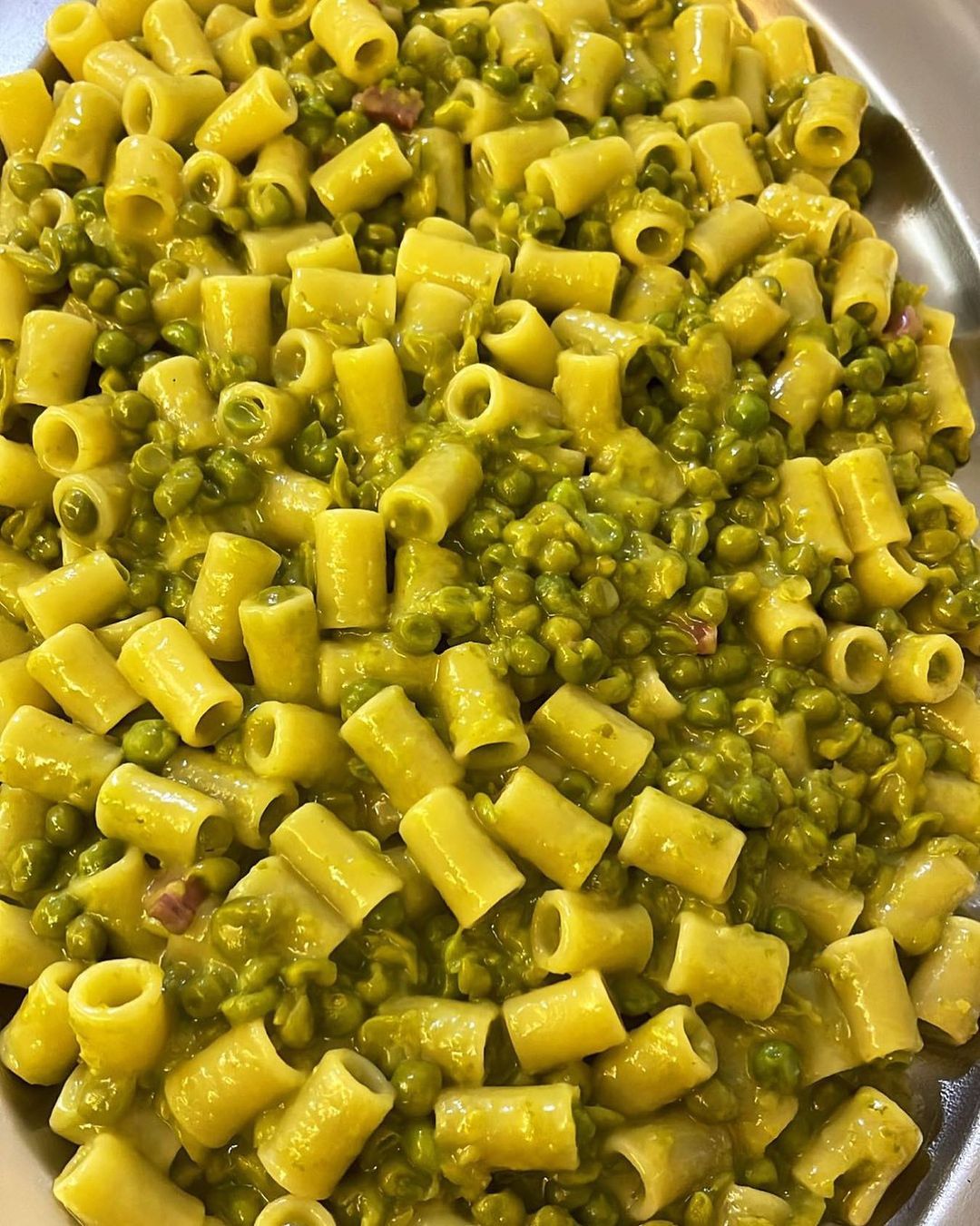
Pasta e piselli; Courtesy of Ristorante Ciro a Mergellina
FRITTELLE
The scent of fried food wafting through crowded streets is quintessentially Neapolitan. “Frittelle” is a loose term that encompasses the large range of fried delights you can find here. To name but a few favorites: zeppoline, little balls of crescent-shaped bread or dough; cauliflower fritters; fiori di zucca; scagliozzi, fried polenta triangles; whitebait (small fish) fritters; zeppole; and panzarotti. Hungry yet? Head to any Neapolitan street cart or pizzeria, where the fried goodies are often munched on as antipasti. Unlike their sweet counterparts, Neapolitan zeppole are fried balls of dough seasoned with nothing but salt (the cream and amarena versions served on St. Joseph’s day are another story). Neapolitan panzarotti are cylinders of mashed and fried potatoes (not the same as Puglian panzerotti).
Where to Try Our Favorite Version: Friggitoria Vomero
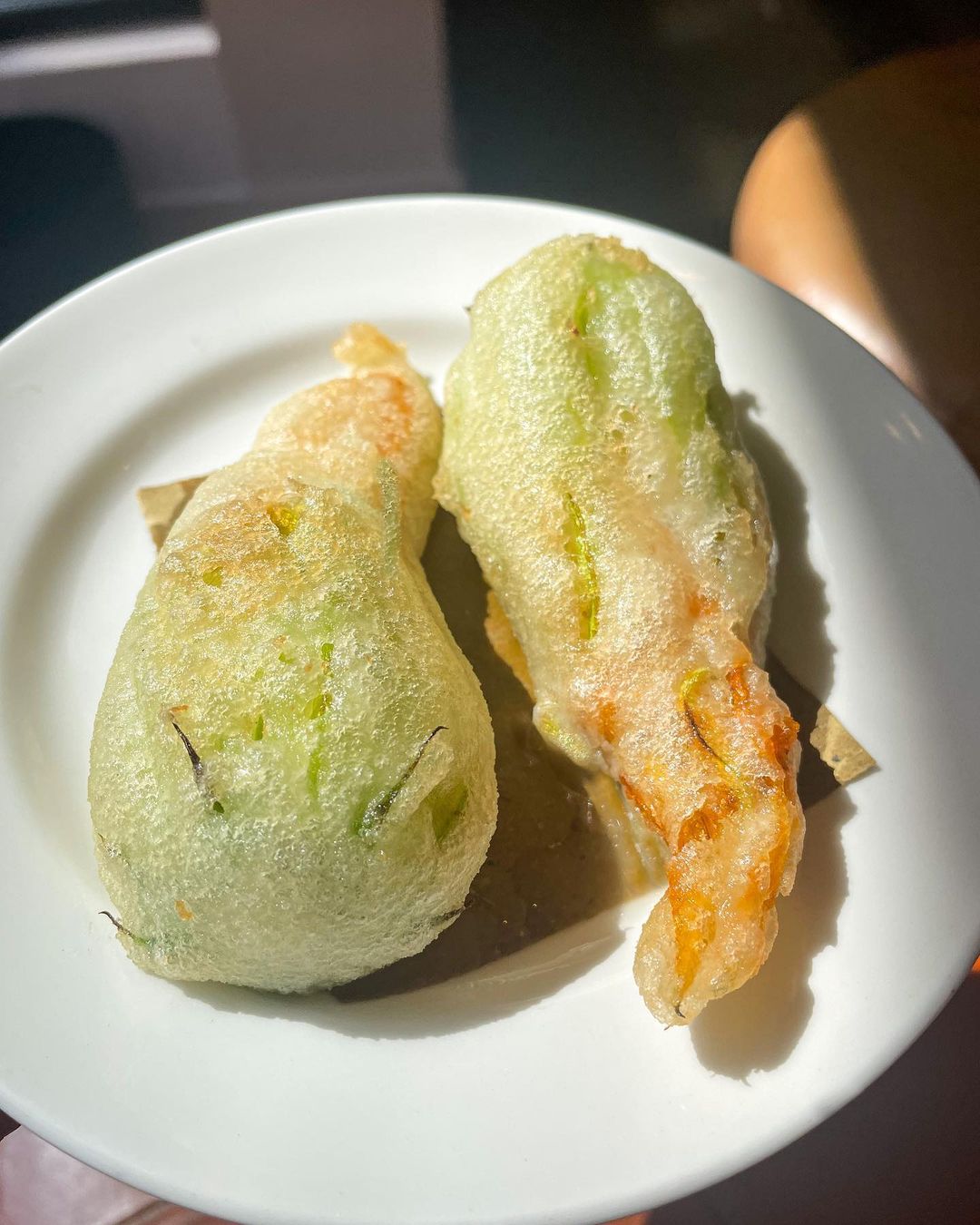
Fried zucchini flower
RISO E VERZA
A city of pasta, Naples is not known for its risottos. And yet, rice is still a beloved ingredient: think of sartù di riso (read on for an explanation) or little arancini (though Sicilian, they’re made in abundance here with other fritti). Riso e verza (rice and cabbage), too, is a classic of cucina povera, called virze e rise in dialect. With a tight ingredient list–rice, cabbage, sometimes onion, Parmigiano Reggiano or pecorino, and broth–the secret is cooking the cabbage until it really softens and tossing in the parmesan rind when you add the rice and broth. You can use any kind of cabbage here, and the dish easily becomes vegan if you omit the cheese.
Where to Try Our Favorite Version: Cibi Cotti Nonna Anna
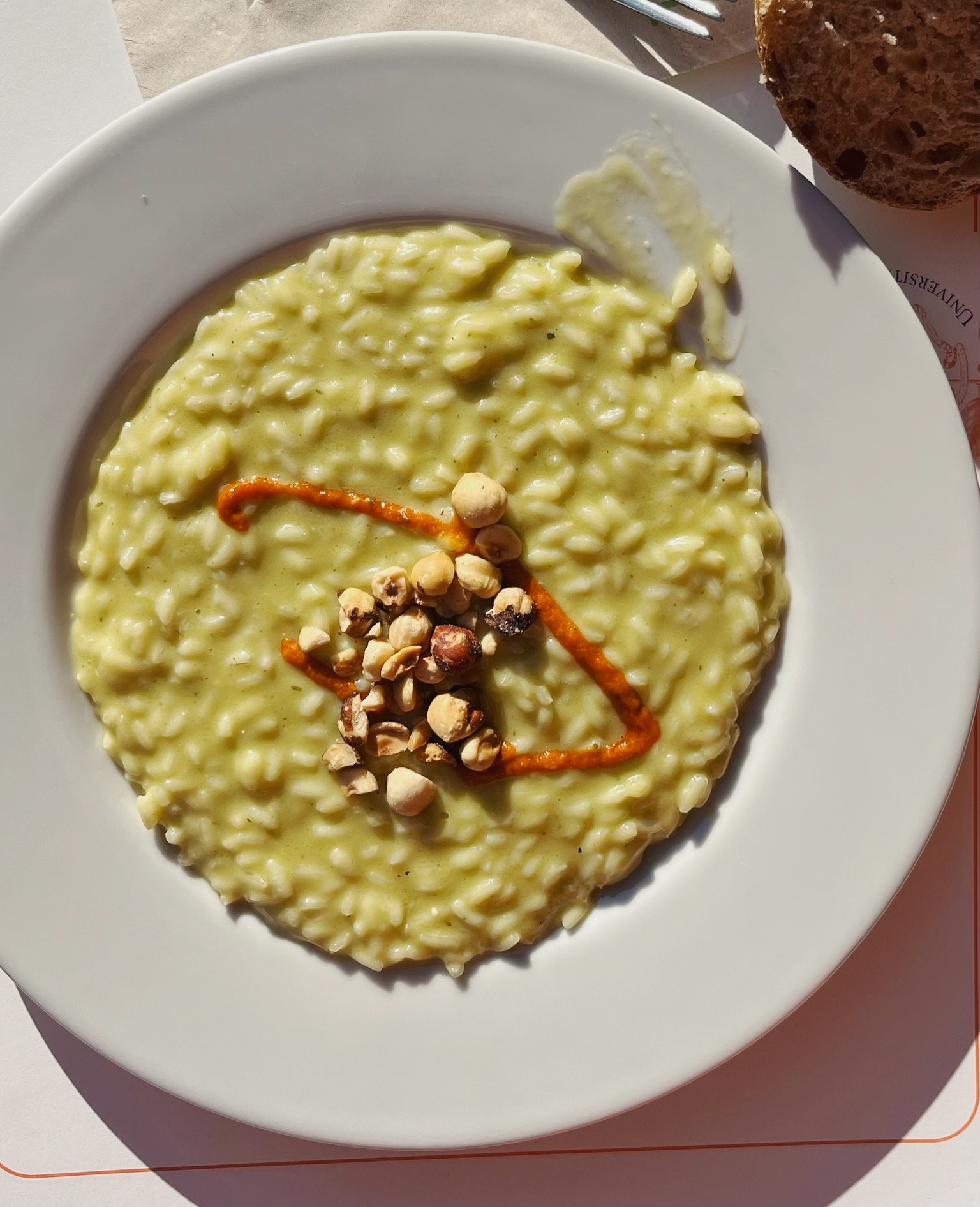
Riso e verza
SARTÙ
This showstopper belongs on a king’s table, which is fitting since it made its 18th-century debut in the royal court of Maria Carolina of Austria, the wife of King Ferdinand IV and III. In essence, it’s a sumptuous timbale of rice, meat, tomato, peas, vegetables, mushrooms, meatballs, and hard-boiled eggs. The whole thing is baked in a “crust” of rice, and then flipped over before being sliced like a cake and served either bianco or con ragù. French court chefs are behind the dish, explaining its departure from the normal Neapolitan lineup. The dish’s name bears similarity to the French word “sur-tout”, which means “above everything” and referred to a decorative tray centerpiece that held the most impressive dish at a banquet–most often this timbale. Neapolitan dialect then turned sur-tout into sartù. If you’re feeling (really) ambitious, you can attempt this recipe at home, but save yourself the 27 (give or take) ingredients and five hours required and try a slice in a restaurant.
Where to Try Our Favorite Version: Antica Trattoria da Carmine
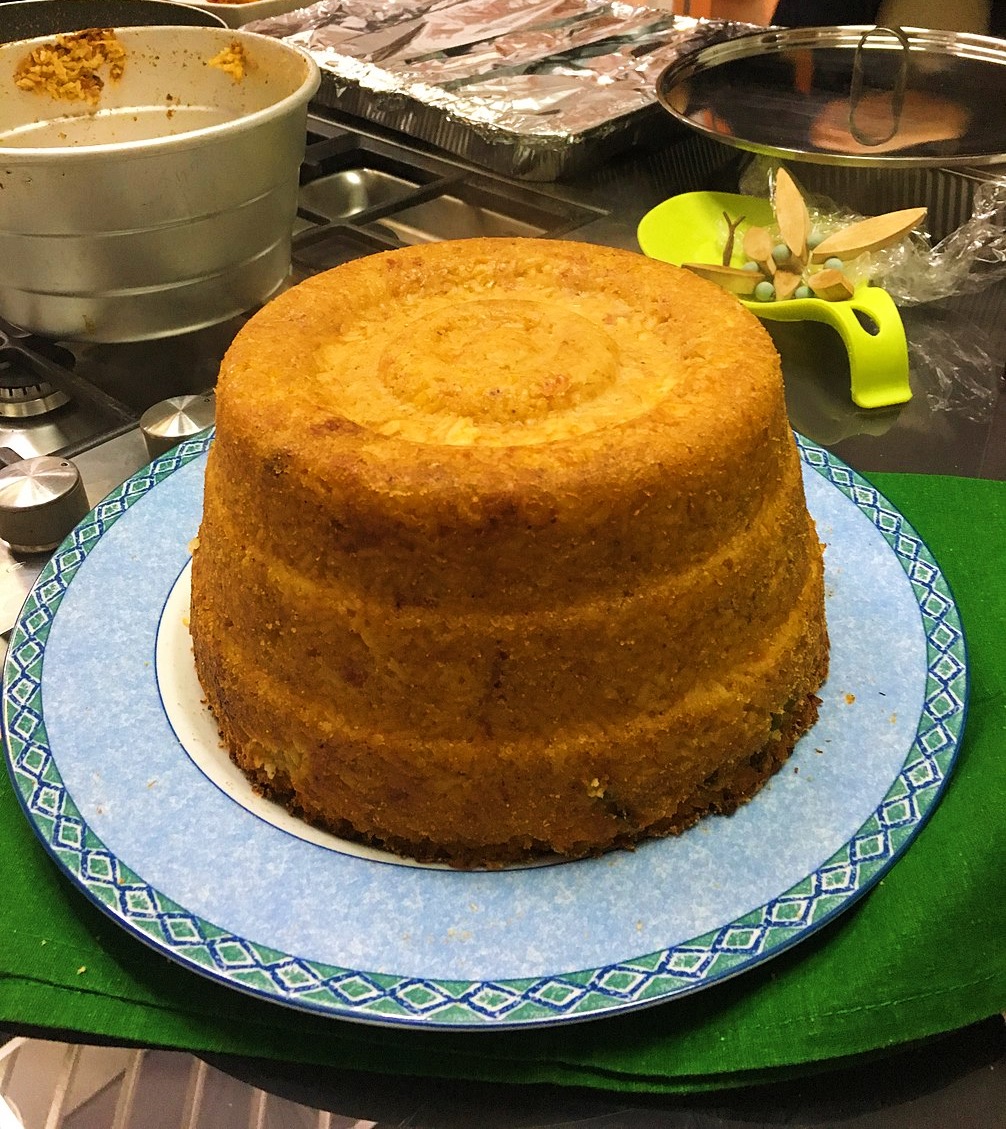
PASTA E FAGIOLI CON LE COZZE
As with pasta e piselli and paste e patate, this pantry-fave dish is creamy and well-bonded–but not brothy–and found all across southern Italy. Everything (besides the mussels) is cooked in the same pot in this order: oil, garlic, parsley, beans, hot broth or water, pasta (typically pasta mista of all short shapes, but you’ll also see tubetti). The mussels are steamed and opened separately, shelled, and tossed in at the end of the pasta’s cooking along with their salty juices. Local lore says the dish was created to please the “Bella ’Mbriana”, a benevolent yet mischievous spirit who protects the house. It was customary to place an extra dish on the table at dinner for her, but she was capricious; in fear of displeasing her, housewives would add mussels to the usual dish of pasta e fagioli, which delighted not only the spirit, but also the women’s guests and husbands.
Where to Try Our Favorite Version: ‘A figlia d’o marenaro (if you’re in Naples during Easter, also try the famous zuppa di cozze, mussels soup, on Holy Thursday here)
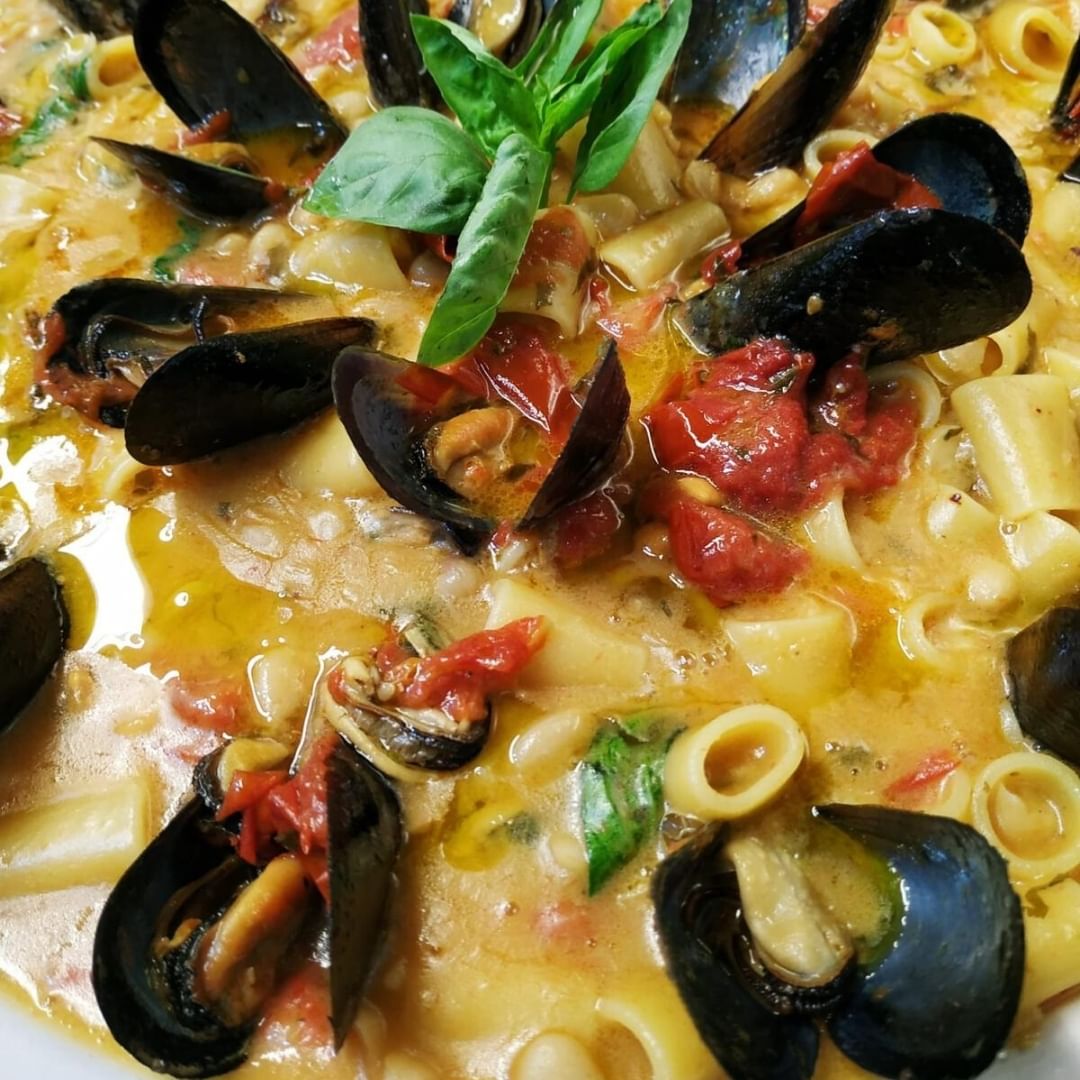
Pasta e fagioli con le cozze; Courtesy of Elettro Forno @elettroforno
SFOGLIATELLA
Shaped like a shell, the sfogliatella is Campania’s most famous dessert, and for good reason. You’ll find this cream-based concoction made in two versions–riccia and frolla–though the former, made of thin puff pastry overlapped to create crunchy folds, is certainly the most popular (sfogliatella translates to a “small, thin leaf/layer”). The frolla, instead, is made of shortcrust pastry, and the filling for both is made of ricotta, milk, semolina, sugar, and candied orange. This dream dessert was born in the 17th century in the Santa Rosa da Lima convent in Conca dei Marini by a resourceful nun: rather than waste leftover semolina dough, she made a filling of dried fruit, ricotta, sugar, and limoncello, covered it with puff pastry, and fashioned it into the form of a monk’s cap. The resulting custardy delight was incredibly successful among the inhabitants near the convent, who called it “Santarosa” in honor of the saint to whom the convent was dedicated. The recipe stayed under lock and key until 1818, when Pasquale Pintauro, a Neapolitan innkeeper and relative of one of the nuns, came into possession of the secret; he brought the dessert to Naples, transforming his inn on Via Toledo into an eponymous bakery that you can still visit today. He made a few tweaks to the recipe, and his version is still the baseline of all sfogliatelle today.
Where to Try Our Favorite Version: Pasticceria Pintauro, Pasticceria Moccia, Pasticceria Bar Al Capriccio
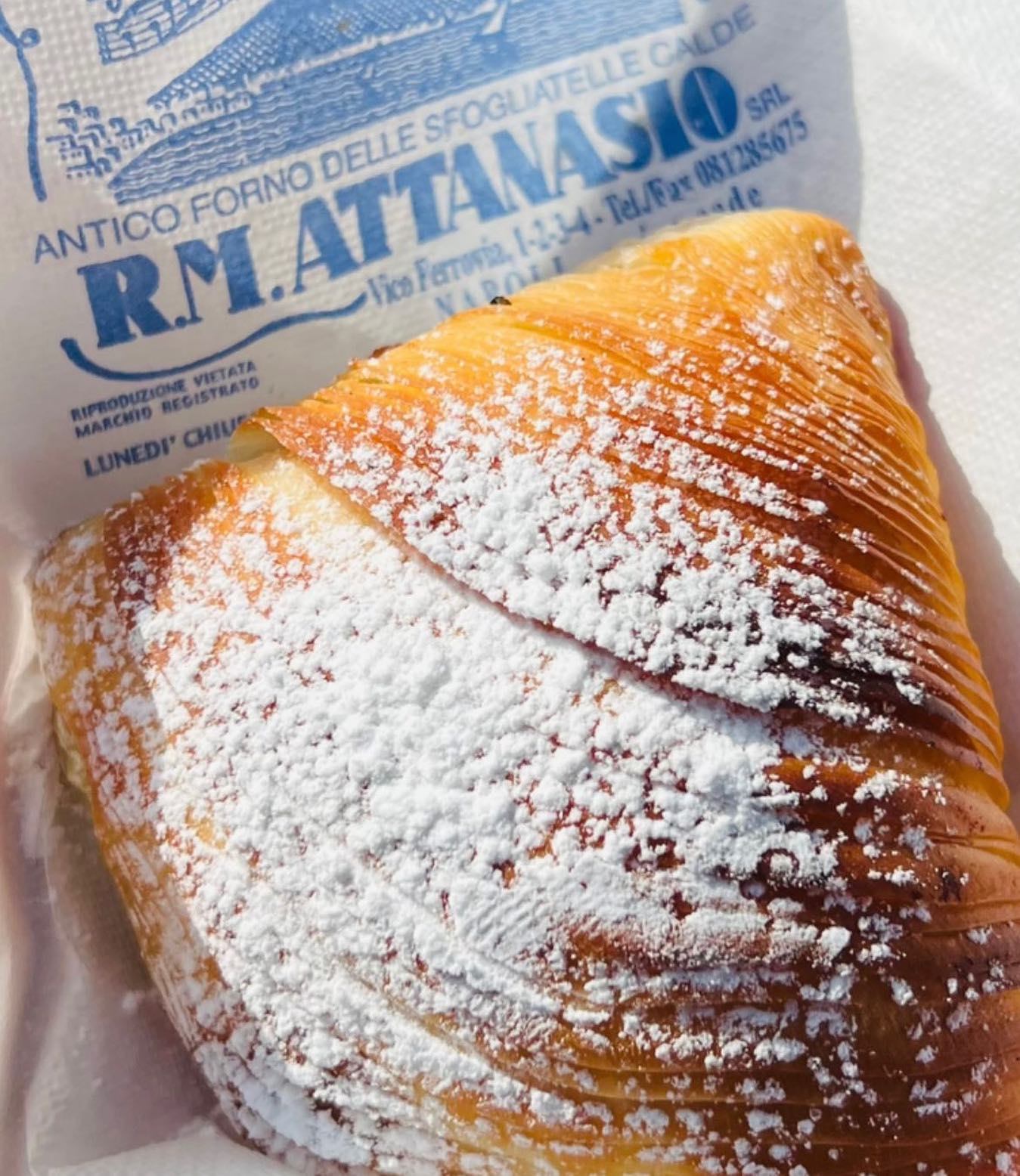
RAGÙ NAPOLETANO
Star of Sunday lunches and family gatherings, this ragù is a feast in and of itself, a two-in-one primo and secondo. Every family swears by their own mix of meat, usually a combination of tracchia or tracchiulella (pork chop), sausage, and cuts of beef–though it’s never minced meat, like in ragù alla bolognese. According to tradition, it must pippiare–simmer for hours and hours–until it reaches the consistency of a thick, concentrated, fiery red sauce. The meat is served as a secondo, and the sauce is tossed with maccheroni pasta and Parmigiano Reggiano. Scarpetta is a must, as is sharing with friends and family, for ’o rraù, in dialect, is first and foremost an occasion to bring everyone together.
Where to Try Our Favorite Version: Salumeria Upnea
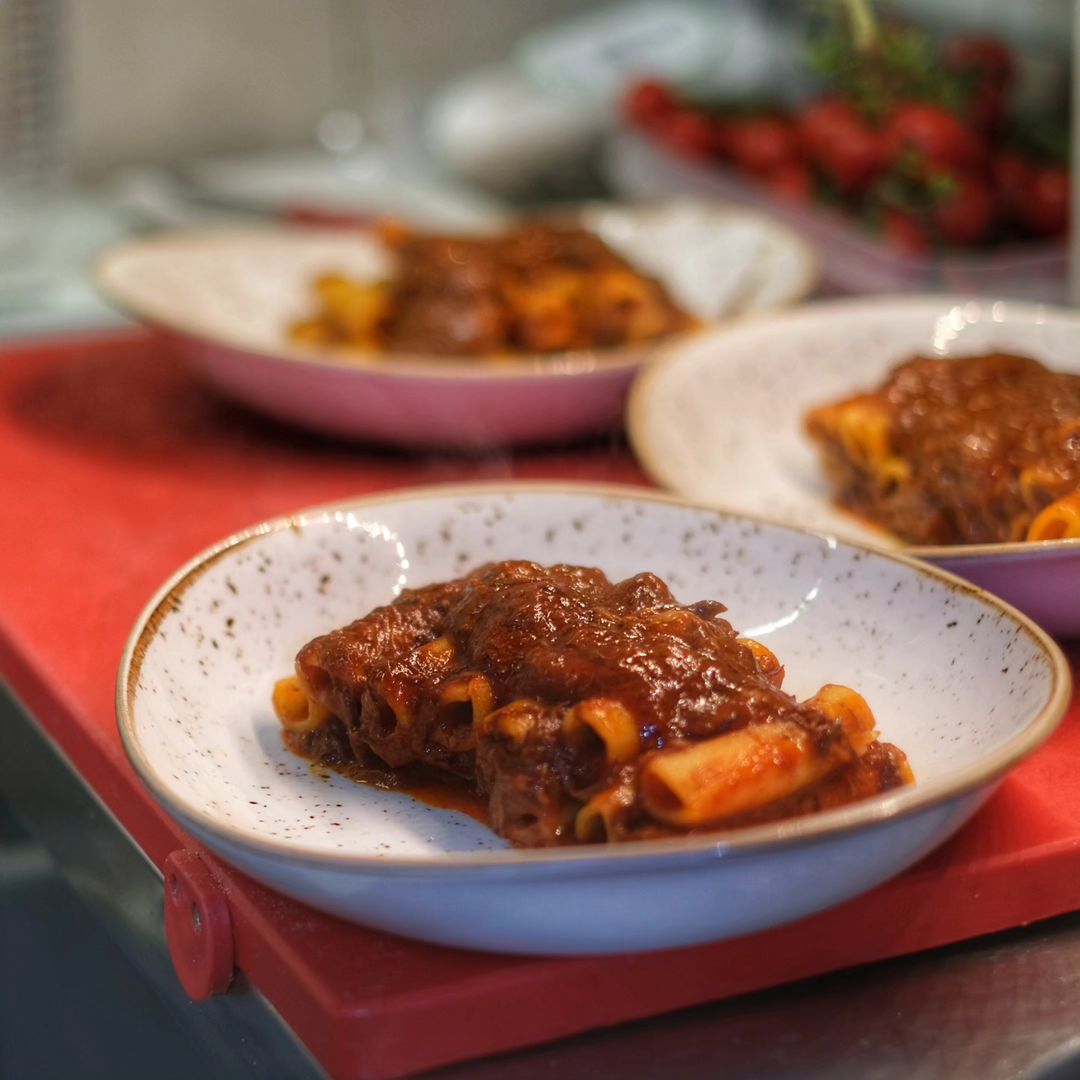
Ragù Napoletano; Courtesy of Salumeria Upnea
BABÀ
Babà might just be Italy’s booziest dessert–and that’s saying something considering our country doesn’t lack in alcoholic delights. Shaped like a champagne cork or capped mushroom, the soft, buttery brioche absorbs the caramely, spiced flavor of the rum it soaks in. Though quite symbolic of Naples, the dessert actually originates from Poland, bearing similarities to that nation’s babka ponczowa. King of Poland Stanislaus Leszczyński, who loved to dabble in the kitchen, is credited with inventing it in the early 18th century; finding the kugelhopf (a type of donut-shaped cake typical of Germany, Austria, and Alsace) too dry, he decided to introduce longer rising times and to soften it after baking with tokaj–a type of wine–and syrup. He named the dessert Ali Baba in honor of the protagonist of one of his favorite stories, The Thousand and One Nights. When his daughter married Louis XV of France, the cake made its way into the courts of Versailles, and some French chefs began experimenting with the recipe, subbing Eastern European wine for the hottest alcohol of the time–Jamaican rum. French cooks under Ferdinand IV of Bourbon brought the recipe to Naples during the latter half of the century, where it was immortalized in the city’s culinary heritage by Vincenzo Agnoletti’s 1863 Italian cookbook. You’ll likely find versions of babà submerged in a jar of syrupy, rummy goodness, but they don’t compare to the fresh ones from Naples.
Where to Try Our Favorite Version: Pasticceria Bar Al Capriccio

Babà; Courtesy of Carraturo Vittorio 1955
PASTA ALLO SCARPARIELLO
A variant of its simpler sister pasta al pomodoro, this primo calls for a generous use of grated cheese–a mix of parmesan and pecorino–to be added to the tomato sauce. Tradition says it was invented in the Quartieri Spagnoli (Spanish neighborhood) of the city by the wives of scarpari, shoemakers, in order to quickly feed their husbands who were always hurrying off to work. Since the shoemakers were often compensated with dairy products rather than money during lean times, the women had mounds of cheese to add to leftover Sunday ragù. The resulting sauce was so perfectly balanced that it’s stayed on menus until today (even if scarpari may no longer be paid in cheese). The neighboring town of Aversan claims the dish was actually invented there, so try both versions for yourself and see what you think.
Where to Try Our Favorite Version: PastèNa
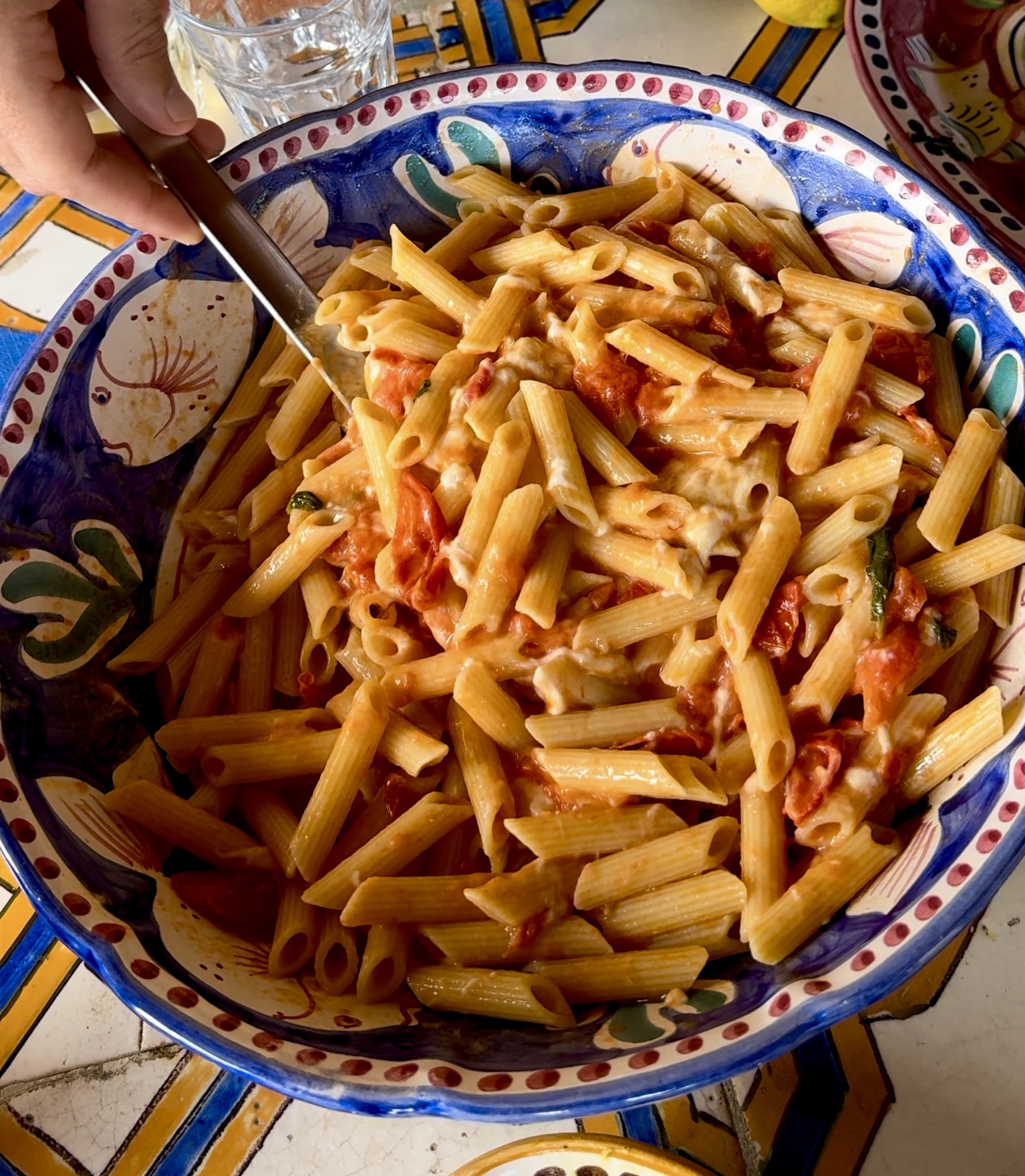
Pasta allo Scarpariello
LARDIATA
This tomato-based pasta sugo proves something can be more than the sum of its parts. Born from cucina povera traditions in the time of the Borboni, the main ingredient in this simple sauce is lard. Lard was considered an undesirable piece of meat by the nobility, so poor farmers were often stuck with the fatty cut. In desperate need of food but without many other options, they combined the lard with tomatoes, pecorino, and basil, creating a tangy, hearty sauce perfect for topping ziti or mezzanelli. Versions today might include garlic, onion, parsley, or white wine, but the key is the room temperature lard, which becomes buttery in texture. A little fun fact: this is considered to be one of the very first tomato-based dishes born in Italy.
Where to Try Our Favorite Version: Mimì alla Ferrovia, Trattoria Medina
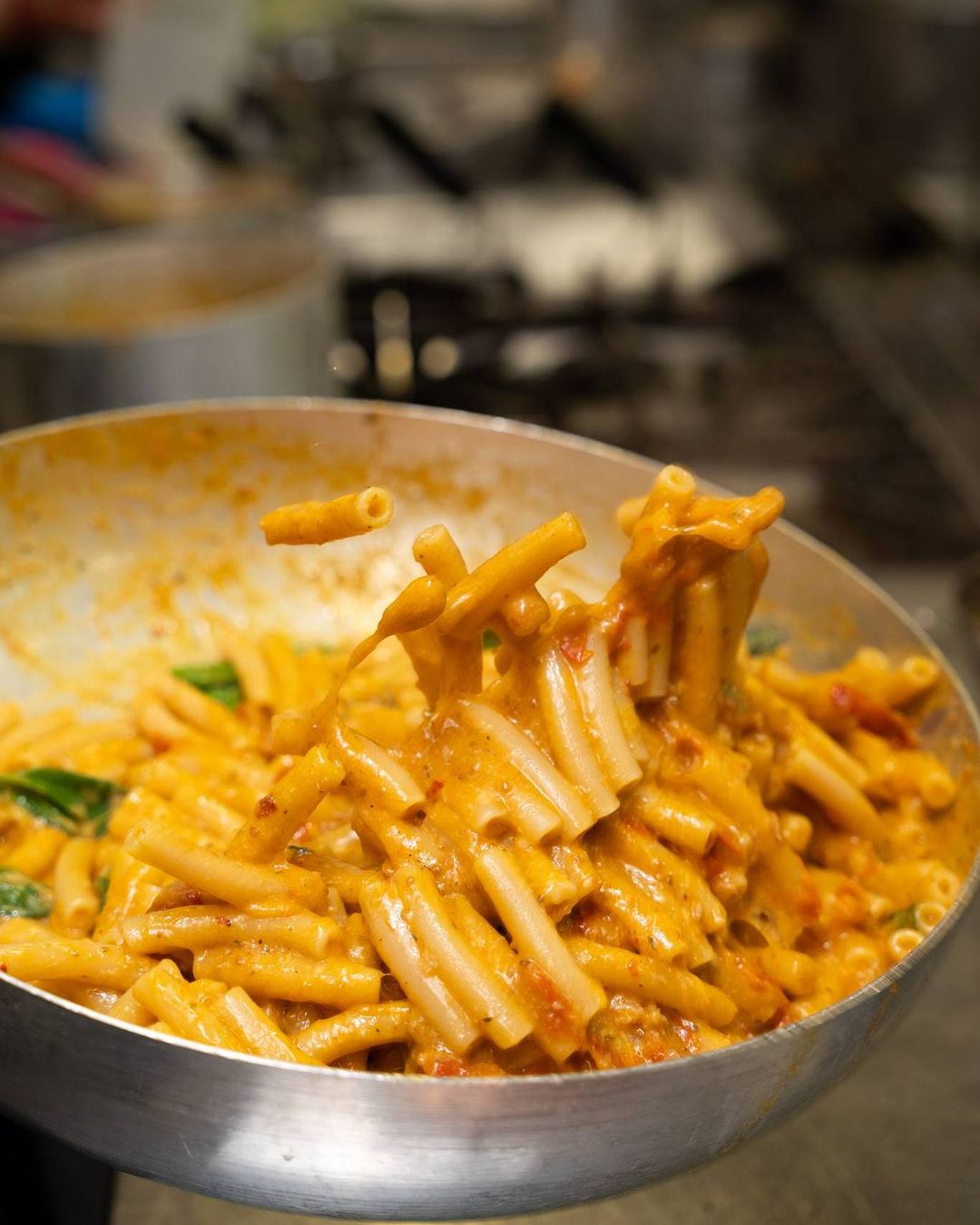
Lardiata; Courtesy of Mimì Alla Ferrovia
CALAMARATA
Most often served on Sundays or other festive occasions, this seafood primo is made of thinly sliced squid, pasta, and a touch of tomato paste or cherry tomatoes. The pasta shape of choice here is the titular calamarata, named after squid since the thin rings are nearly identical to calamari. The sauce also works well with paccheri or mezzi paccheri… but then you’d be missing out on the charm and playfulness of the dish. Though it’s usually made by sauteéing all the sugo’s components together and tossing it with the pasta, some claim that it’s better to finish cooking the dish in the oven, with everything wrapped in a sort of casket made of parchment and aluminum, and then served.
Where to Try Our Favorite Version: Hosteria Toledo
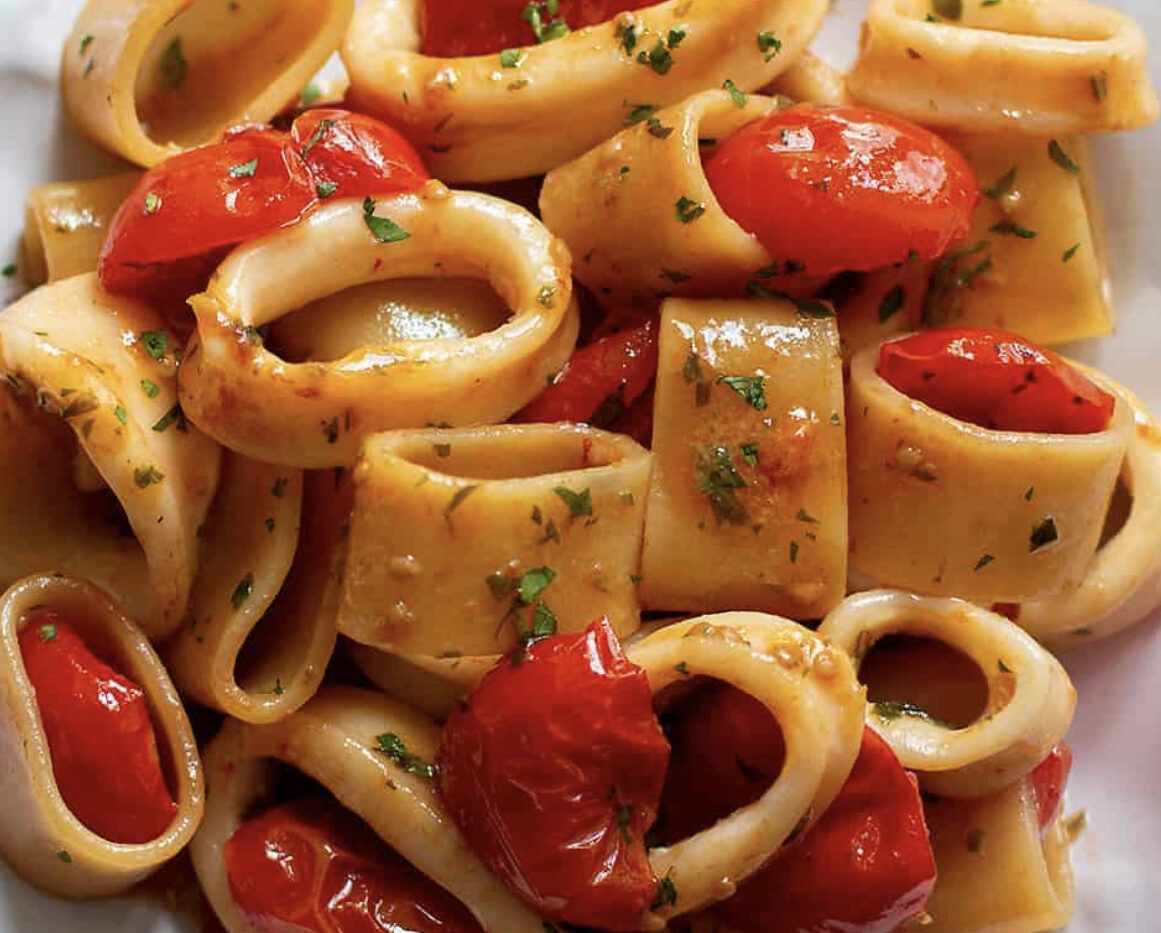
Calamarata
PASTIERA
This tart comes into fashion during the Easter period and is typically made by Neapolitan families on Holy Thursday. Secret recipes passed down through the generations generally consist of a shortcrust pastry filled with cream of wheat, custard, candied fruit, ricotta, eggs, milk, aromatics (orange, lemon, rose, vanilla), and liqueurs like limoncello or the herbal strega. The festive tart is traditionally topped with seven strips of shortcrust pastry forming multiple diamonds, which some claim to celebrate the plan of the historic center of Naples: the three Decumani (main streets) and the four Cardini (cardinal points) of the Ancient City. Though it’s now associated with Easter, the dish’s history could point to pagan mythology and the mermaid Partenope who founded Naples. The Neapolitan people brought her gifts–flour, wheat, ricotta, eggs, candied fruit, orange blossoms, and sugar–which she combined to make a version of the pastiera. Though we aren’t here to dispute the reputation of a siren, it’s more likely that the dish came from the convents of the area. The scent of the nuns’ tarts, which would waft through the towns, “gave consolation to the poor people for whom that heavenly aroma was the testimony of the Lord’s presence,” according to writer and gastronome Loredana Limone. Quite the Easter miracle.
Where to Try Our Favorite Version: Pasticceria Moccia
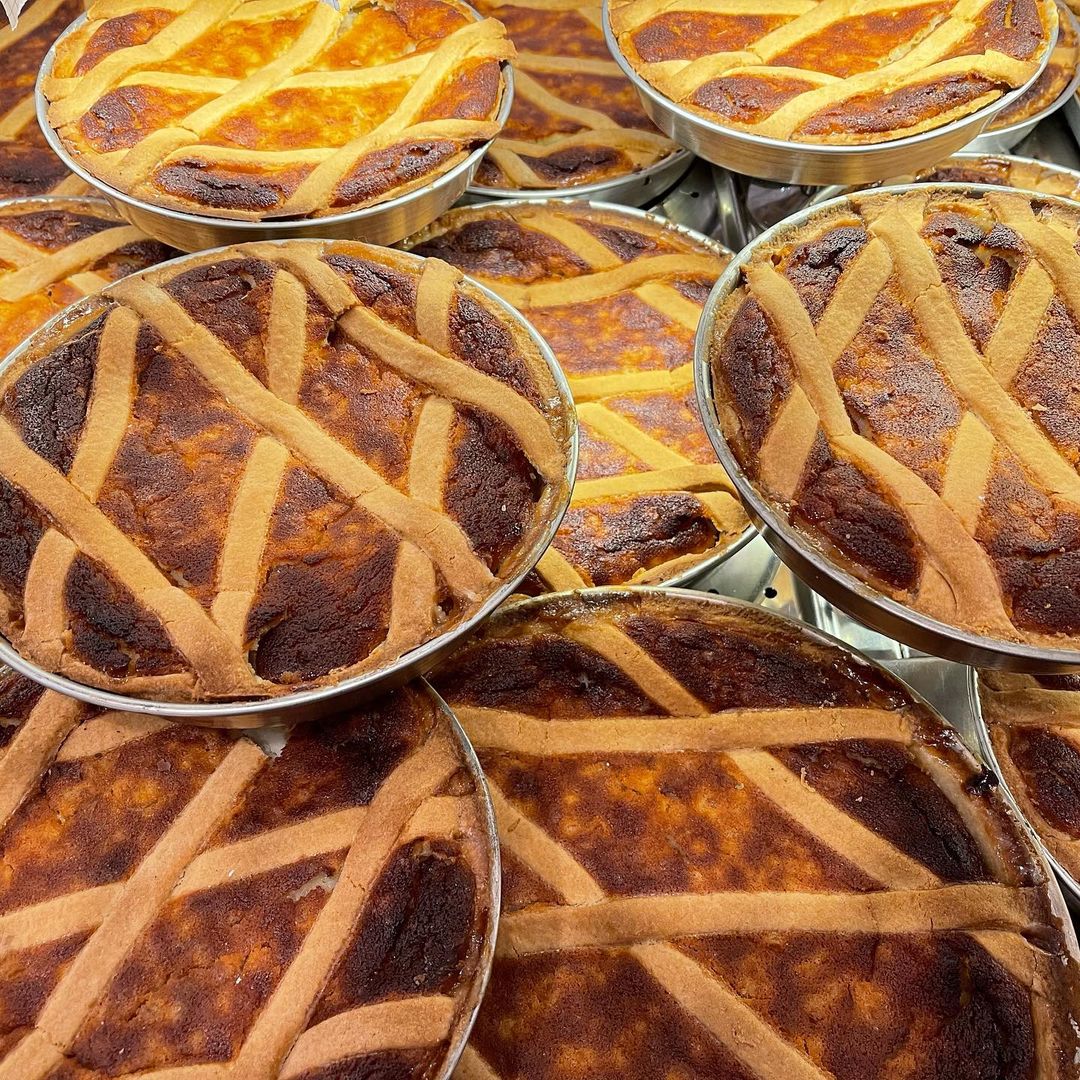
Pastiera napoletana; Courtesy of Carraturo Vittorio 1955
PEPERONCINI DEL FIUME
You might know and love these long, thin, bright green peppers by what they’re called in other regions: friggitelli, or “friariello”, which they’re often referred to since they’re usually fried–not to be confused with the bitter friarielli green that we introduced you to previously. However, in Naples, this dish is known as peperoncini del fiume, meaning peppers of the river. These peperoncini aren’t spicy at all, but a sweet little addition to a thick cut of meat or atop pasta. They’re usually pan fried and dressed simply with salt and oil, though they pair excellently with fresh cherry tomatoes, too. To add one more nominative iteration into the mix, these puparunciell ‘e ciummo (in dialect) are so called because they were once cultivated by monks in the banks around the Sarno river, and today, they often come from a plant that grows wild along the irrigation channels of vegetable gardens.
Where to Try Our Favorite Version: Any trattoria
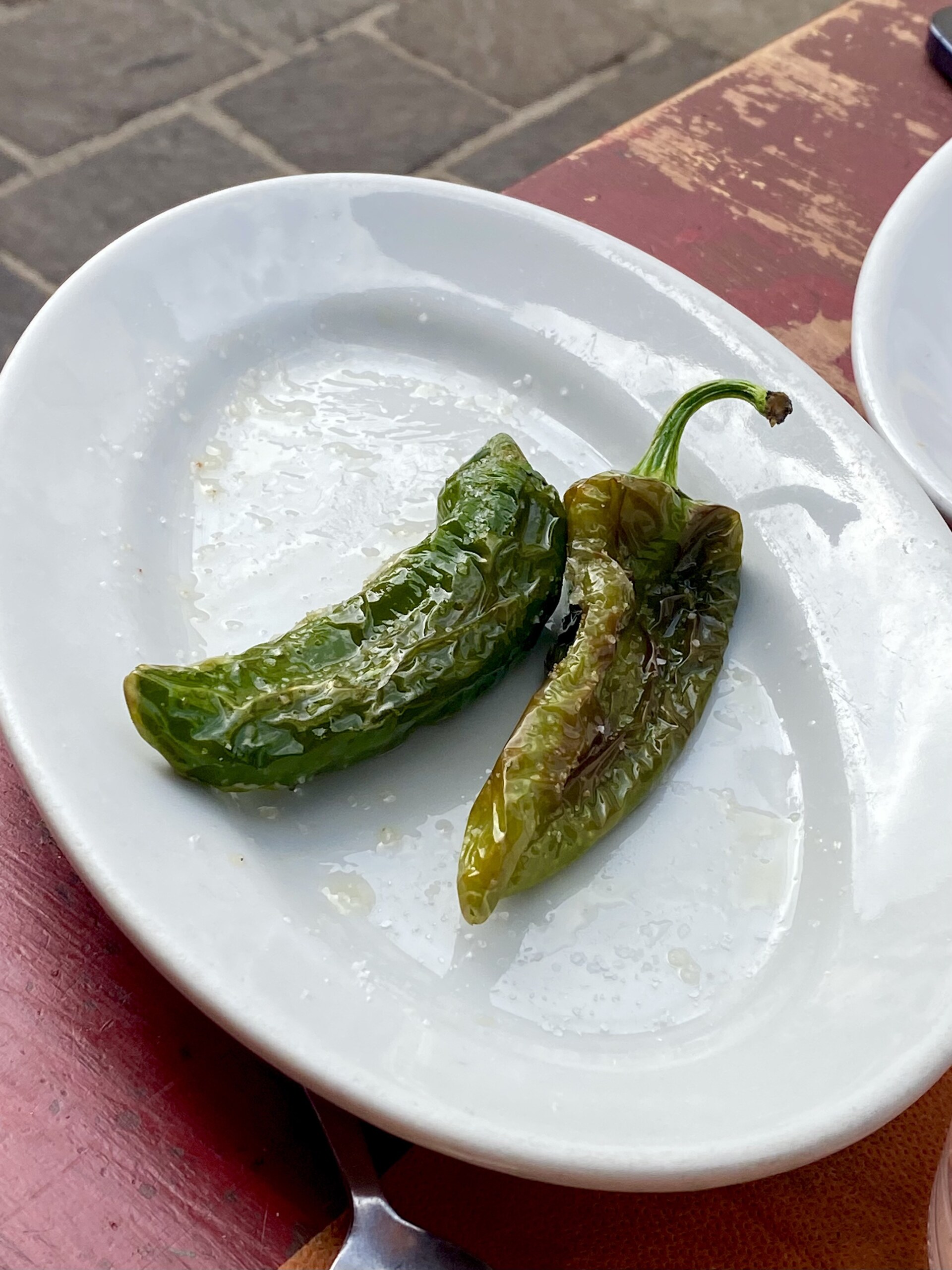
GATTÒ DI PATATE
A real staple of Neapolitan cuisine, this torta salata is a gooey comfort dish of potato, cheese, and cold cuts, wrapped up in a flaky golden crust. For the meat, prosciutto cotto, salami, and pancetta are all valid options; for the cheese, the main criteria is that it’s melty and stringy–typically mozzarella or provolone are used. Actually spelled gateau di patate, the Neapolitans spell it as it’s pronounced: gattò or gatò. It first made its way to the refined tables of the Kingdom of Sicily at the end of the 18th century thanks to Queen Maria Carolina (who was also responsible for the sartù). The Neapolitans switched the gruyère with fior di latte and added salami, including this fluffy tort in the growing number of French-inspired dishes in this list.
Where to Try Our Favorite Version: Trattoria da Ettore
ZUCCHINE ALLA SCAPECE
Vinegar-marinated concoctions abound in Italy, taking on names like scapece, carpione, saor. The most famous version of the former is zucchine alla scapece, a preparation in which courgettes are sliced into thin rounds, deep-fried, and then soaked in a bath of garlicky vinegar with oil, mint, and salt. Served cold, it’s a refreshing, summery dish that works perfectly alongside fish or in an antipasto spread. Scapece originates from the Spanish word escabeche, in turn from Arabic (iskebech) and Iranian before that–referring to meat marinated with vinegar, raisins, and Persian spices. Inspired by the Arabs, the Spanish began preserving cooked meat, fish, and veggies in vinegar, and during the 13th-century Spanish domination of southern Italy, passed their traditions on to Campania. Others claim that the word’s etymology comes from the Latin name Marcus Gavio Apicius, the presumed inventor of the recipe, who lived under the Emperor Tiberius.
Where to Try Our Favorite Version: Osteria della Mattonella
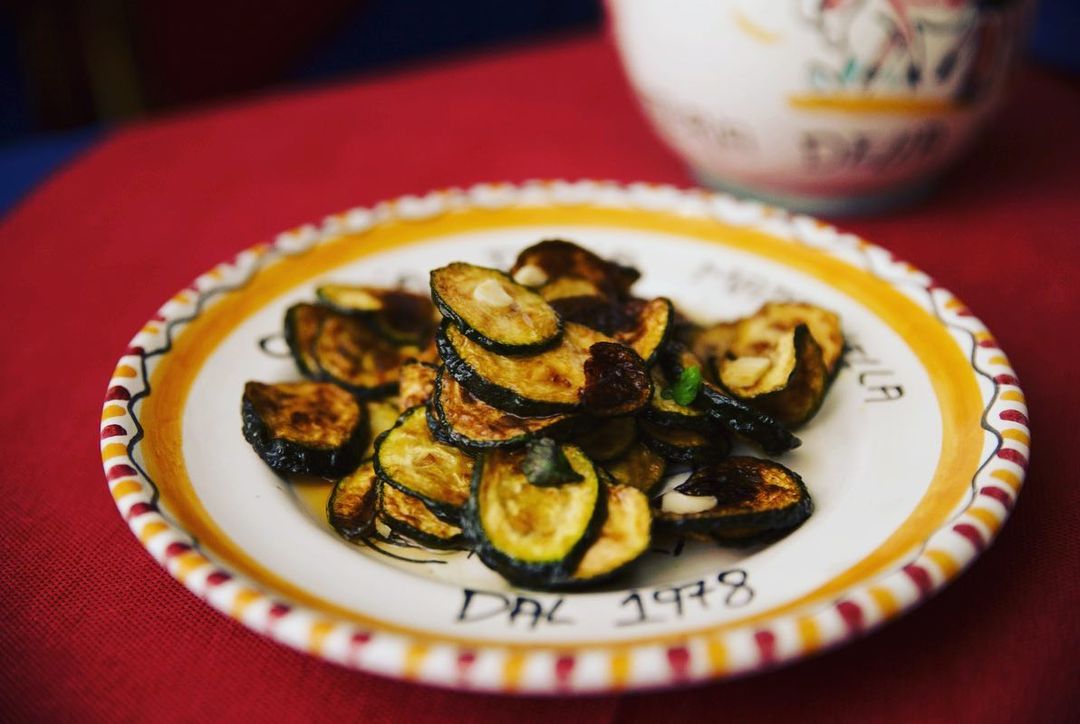
Zucchine alla scapece; Courtesy of Osteria della Mattonella
ZEPPOLE DI SAN GIUSEPPE
The dough for these festive zeppole is made of just eggs, flour, butter, and water, a great neutral base for the thick crema pasticcera and amarena cherries they’re topped with. Though the crunchy little treats exist all across Italy, in Naples they’re synonymous with March 19th–the day of San Giuseppe and also Italy’s Father’s Day. Ippolito Cavalcanti writes of the yeasty delight in his 1837 cookbook, but it was popularized before by Pasquale Pintauro–the same man responsible for sfogliatella: he piped pastry dough into hot oil, fried it, stuffed it with cream, and topped it with an amarena cherry. The result is much more similar to a cream puff than the zeppole of Carnival you might be picturing, which are yeastier, heavier, tossed in powdered sugar, and eaten across the boot. Today, both fried and baked versions exist. Though never specifically mentioned in the Bible, some sources claim that Joseph, after Jesus was born, had a brief career as a frittellaro (fried pastry chef) to help make ends meet, so the treats are eaten on March 19th in remembrance and honor of him.
Where to Try Our Favorite Version: Pasticceria Santoro
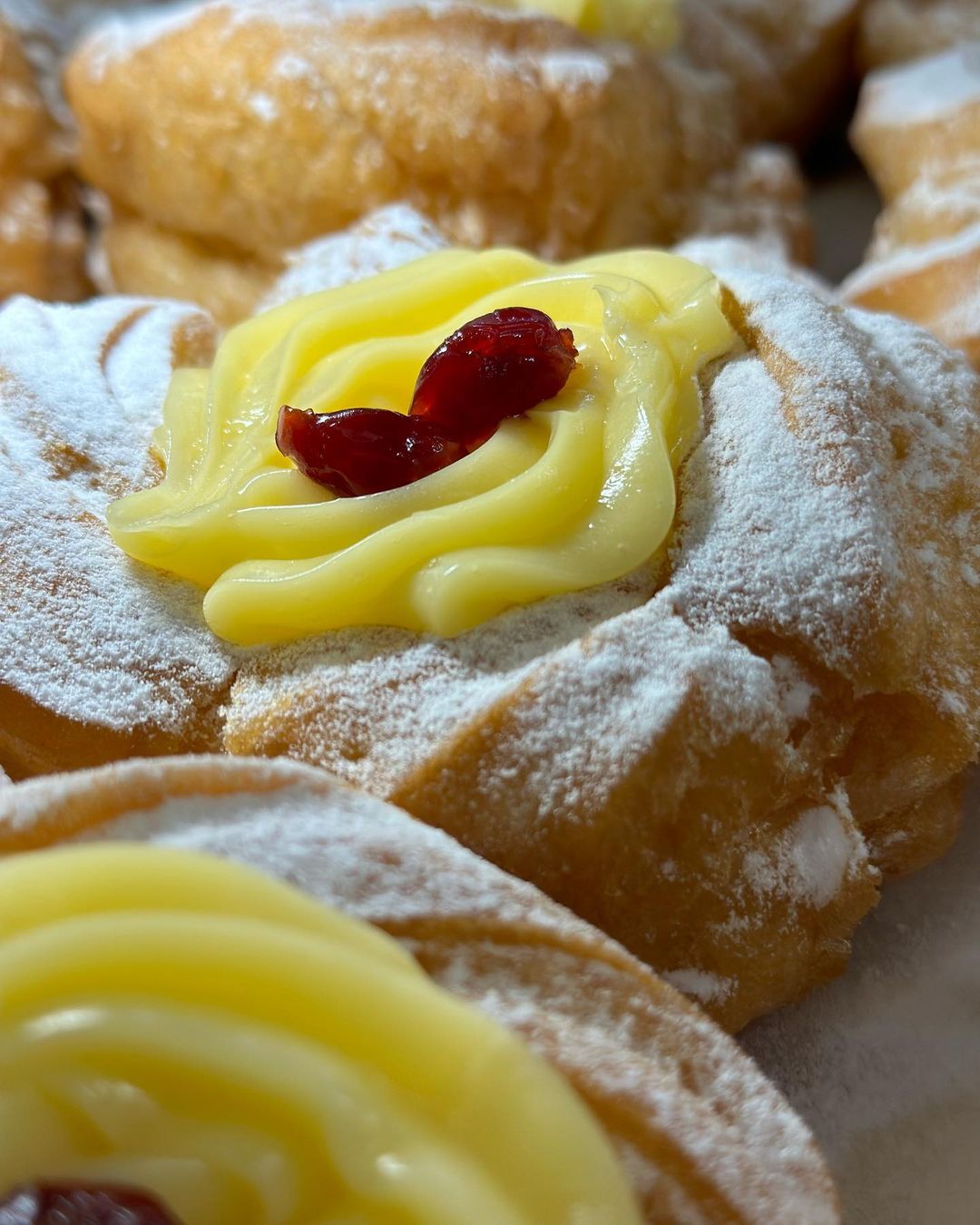
Zeppola; Courtesy of Carraturo Vittorio 1955
PUPARUOLO ‘MBUTTUNATO
These stuffed peppers are served as a substantial contorno or, if really filled up, as a main course. The dish was born out of cucina povera traditions when crafty women began using sweet bell peppers as containers for all sorts of mixed-together leftover ingredients–think pasta, meat, vegetables, cheese, bread, rice, eggs. Typically made in the summer, when the peppers are sweetest, everyone uses their own combo of ingredients that likely changes depending on what’s currently left in the pantry. While some versions of stuffed peppers, like those found in Greece, mostly contain rice, Neapolitan tradition more commonly uses vermicelli. It’s fun to try different versions of these peppers at restaurants and in homes because no two are ever the same.
Where to Try Our Favorite Version: Mimì alla Ferrovia
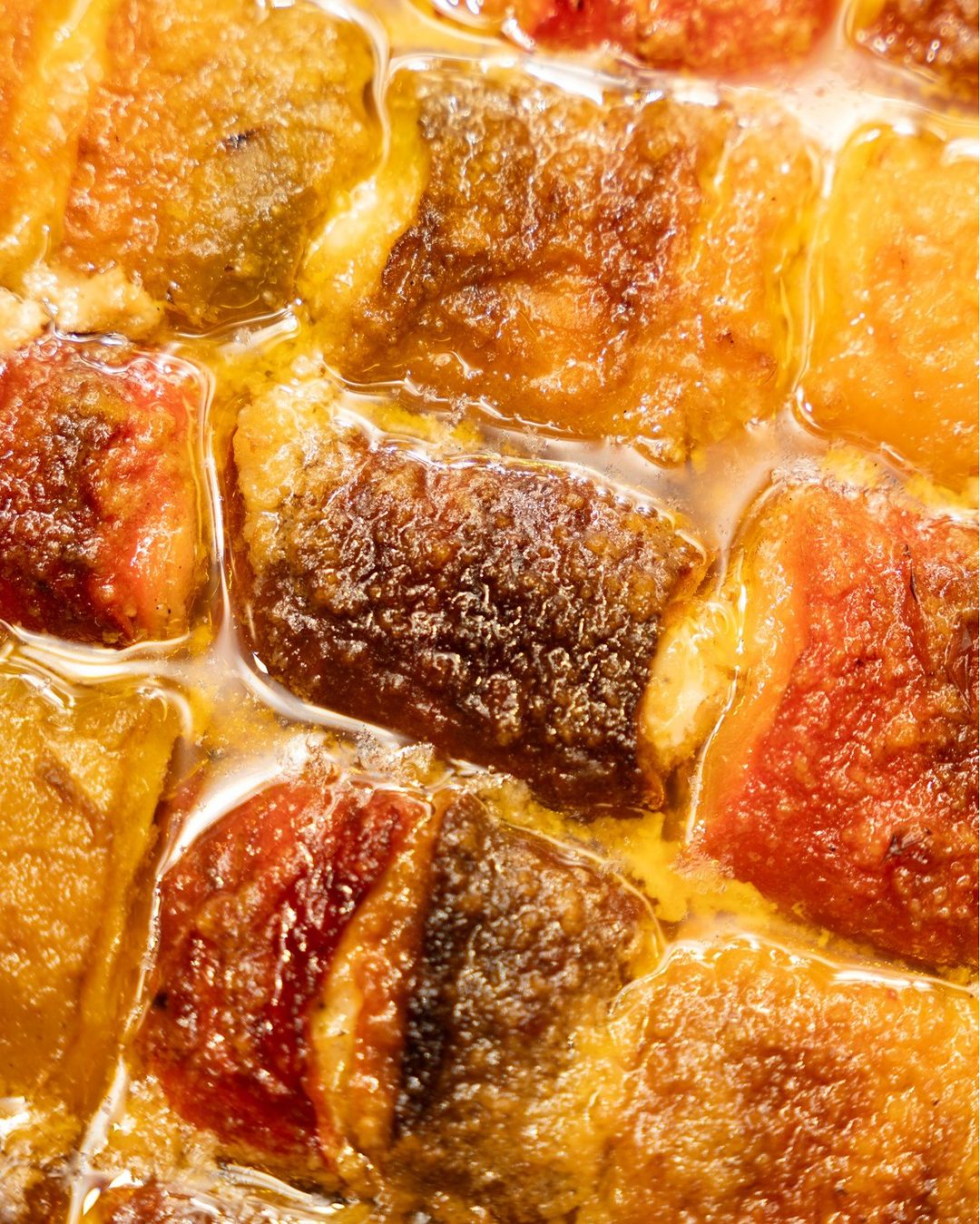
Puparuolo; Courtesy of Mimì alla Ferrovia
STRUFFOLI
This typical Christmas sweet tastes just as festive as it looks: little nuggets of dough–made of flour, eggs, lard (or other fat), sugar, a pinch of salt, and anise liqueur–are fried until crisp and then drenched in honey, colored nonpareils, and sometimes almonds or candied fruit. The balls are then fashioned into a large wreath or stacked high into a sticky mountain, waiting to be devoured by equally sticky fingers. Struffoli has become very popular in Italian-American traditions and is eaten on New Year’s and/or Easter. Most pin struffoli’s origin to 8th century BC, when Naples belonged to the Greeks–the name is similar to the Greek stróngylos for “round” and their shape is similar to the dessert loukoumades (meaning “delicacies”). Others, however, claim that struffoli is actually of Spanish origin, brought about during the Spanish viceroyalty in Naples; the piñonate dessert of Andalusian cuisine differs only in the elongated shape of the dough balls. It’s the perfect treat to bring to your next holiday party, along with lots of napkins.
Where to Try Our Favorite Version: Antica Pasticceria Bellavia

POLIPETTI ALLA LUCIANA
Polipetti or moscardini alla luciana is a luxurious secondi of baby octopus stewed in tomato sauce. The tiny little creatures yield even more tenderness when submerged in the sauce, slow cooked along with garlic, chili, and sometimes olives and capers. The name “octopus luciana-style” points to Borgo Santa Lucia, one of the city’s oldest districts on the seafront near Castel Dell’Ovo. Most of the Borgo’s inhabitants were fishermen who practiced the amphora technique: they would place terracotta pots loaded with stones underwater, and within a few hours, they’d become filled with baby octopus. In Naples, it’s most commonly the moscardino variety–translating to “musky octopus” or eledone moschata in Latin–a slightly smaller species recognizable by the single row of suckers on their tentacles; but other types of octopus can be prepared in this manner as well. The saucy secondo is always served with crunchy slices of bread.
Where to Try Our Favorite Version: La Locanda del Cerriglio
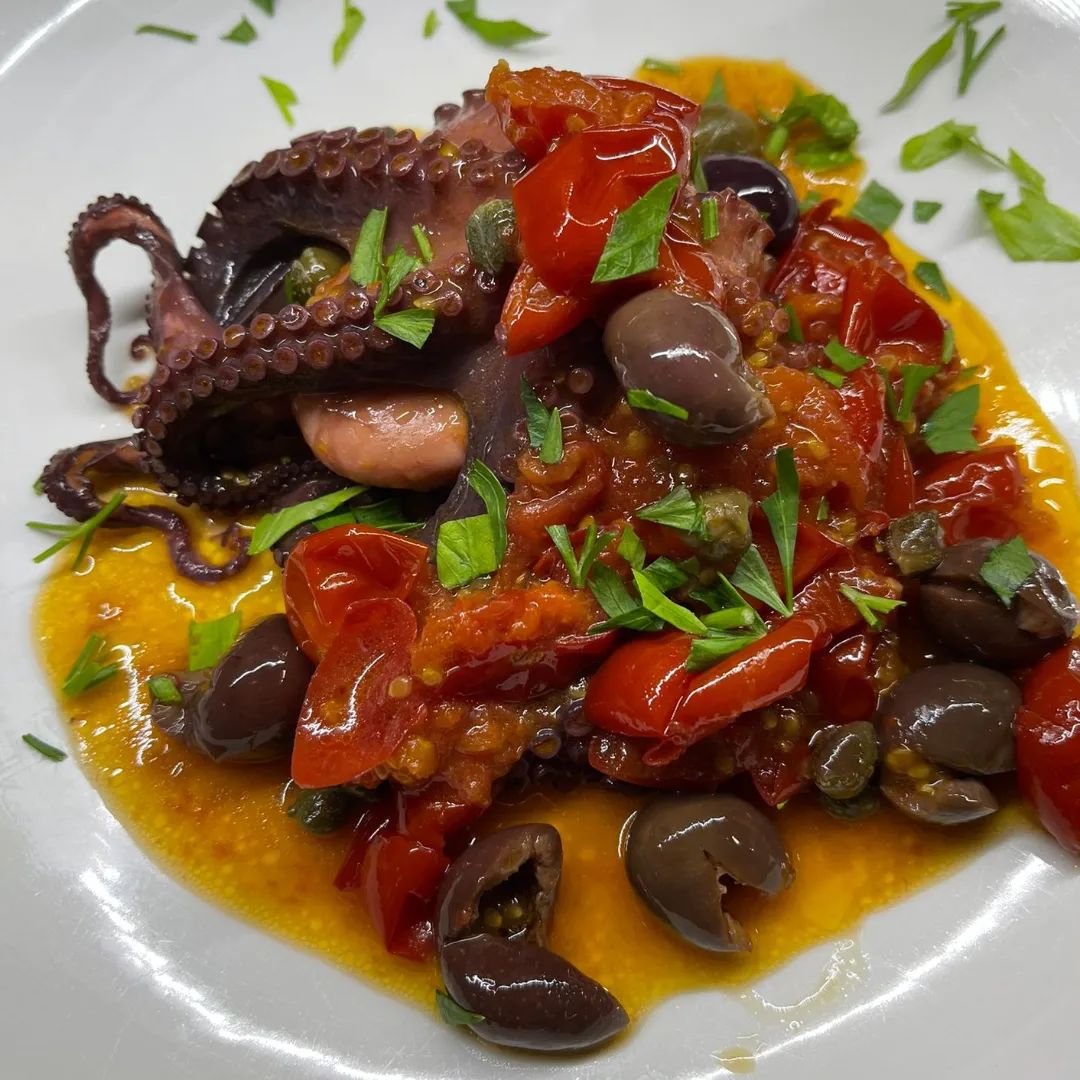
Polipetti alla Luciana; Courtesy of Le Zendraglie
‘O PERE E ’O MUSSO
Naples isn’t excluded from the string of offal dishes that characterize cucina povera traditions and street food across southern Italy. The city’s most common version is ‘o pere e ‘o musso, often abbreviated as per’o musso: calf’s foot and pig’s snout boiled, drained, and seasoned with salt, lemon juice, olives, and lupins (a type of bean). You might also see other cuts of offal added to the plebeian dish depending on which butcher shop or restaurant sells it, from tongue and lungs to spleen, heart, and liver. You can grab some of this intense pairing at seafront carts in Naples, but the dish is more famous in the Vesuvian towns. Either way, get advice from the locals on where to go.
Where to Try Our Favorite Version: Mergellina, Via della Pignasecca
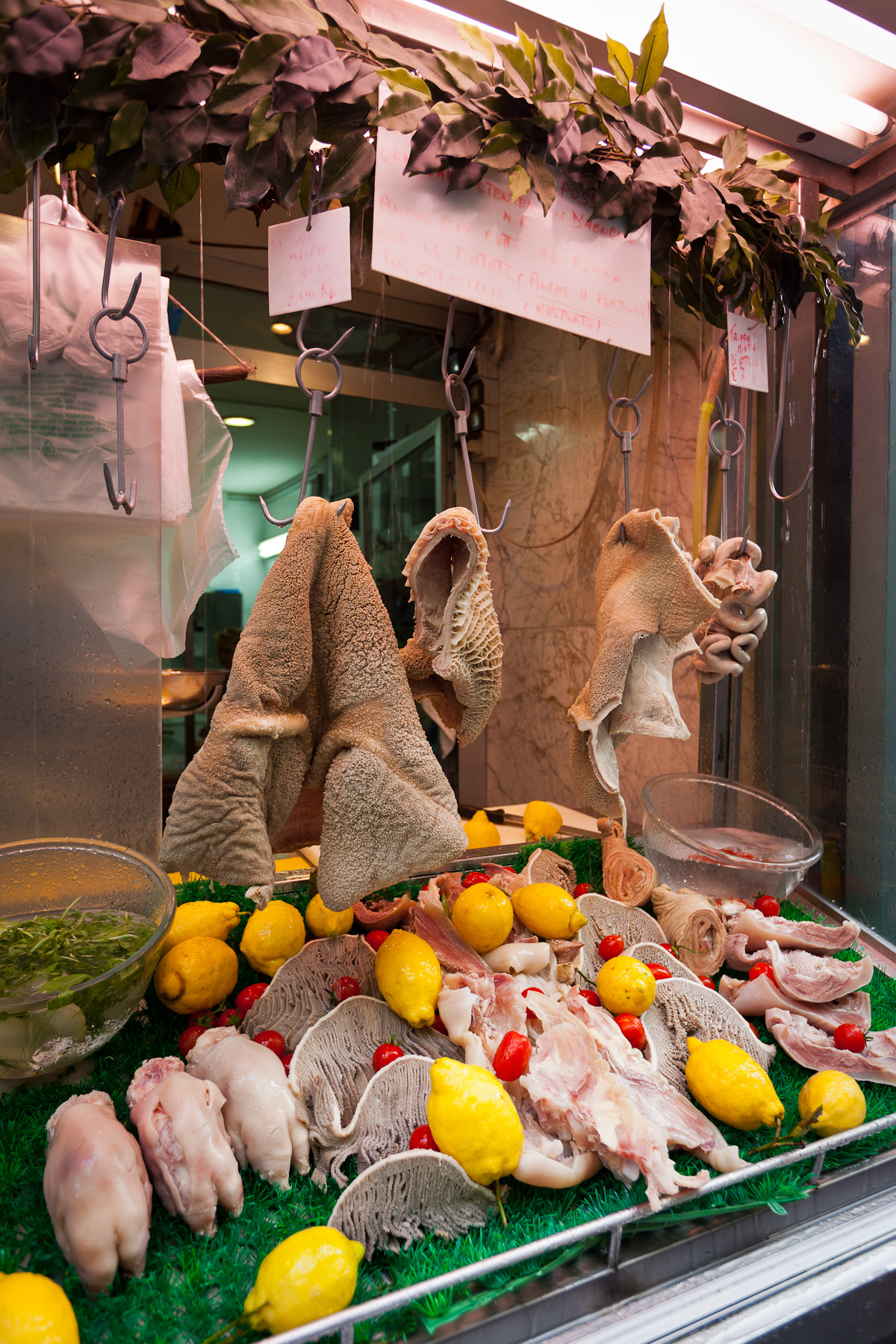
'O PERE E ’O MUSSO and offal sold at a street food cart in Naples; Courtesy of jimmyweee
PIZZA DI SCAROLE
Though pizza di scarole is made of pizza dough, it’s nothing like its flat brothers, but instead a rustic pie with a top and bottom crust enclosing the escarole. The chicory greens are sautéed first with oil, capers, olives, raisins, pine nuts, and sometimes anchovies, before being stuffed into the dough and baked. The savory tort is typically made on Christmas Eve and New Year’s Eve, when escarole is in season, but it’s perfect anytime of the year to bring along on a seaside picnic or to simply enjoy while walking down the street. Though it’s a staple dish at home, you’ll see the green pie lining windows of pizzerias, friggitorias, bakeries, and rotisseries all across the city.
Where to Try Our Favorite Version: Rosticceria D’Auria
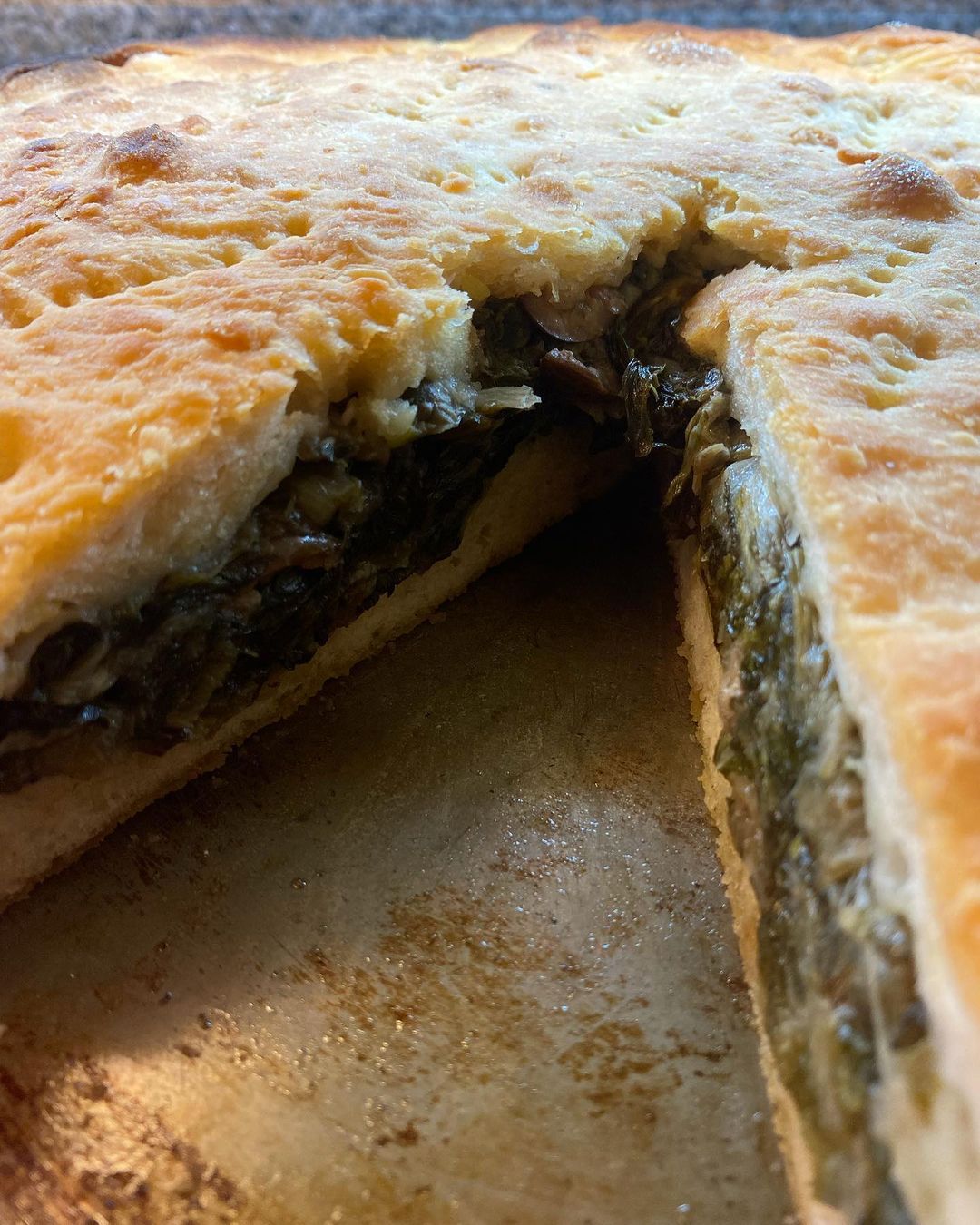
Pizza di Scarole; Courtesy of Salumeria Malinconico
BREAD
In the many conversations about food in Naples, very little is said about bread and its hundreds of variations. However, the so-called pane cafone–what’s in those tiny baskets at restaurants and trattorias–could not be more important in a culinary tradition that includes many (many!) juicy dishes, just waiting to be accompanied, dipped into, or swiped up via scarpetta. A typical lunch here is a cuzzetiello (which translates to “the bottom of the loaf”), which is a giant cone-like sandwich made of the hollowed-out heel of the bread that gets stuffed with various saucy condiments–meatballs, sausage, peppers, eggplant, cheese, etc. In Naples, and throughout Campania, there are dozens and dozens of types of bread. Here are just a few you should try: pane dei Camaldoli, pane di Iurmano, pane di Montecalvo, pane di Padula, pane di San Sebastiano, pane di Saragolla, pane di Villaricca, il panuozzo di Gragnano, le pagnotte di Santa Chiara, il pagnottiello, and the list goes on. Curious? Just step into a forno and be inspired.
Where to Try Our Favorite Version: Antica Forneria Molettieri, Legrani, Panificio Grieco, Rescigno, Moccia, Panificio Marigliano, Il Capriccio
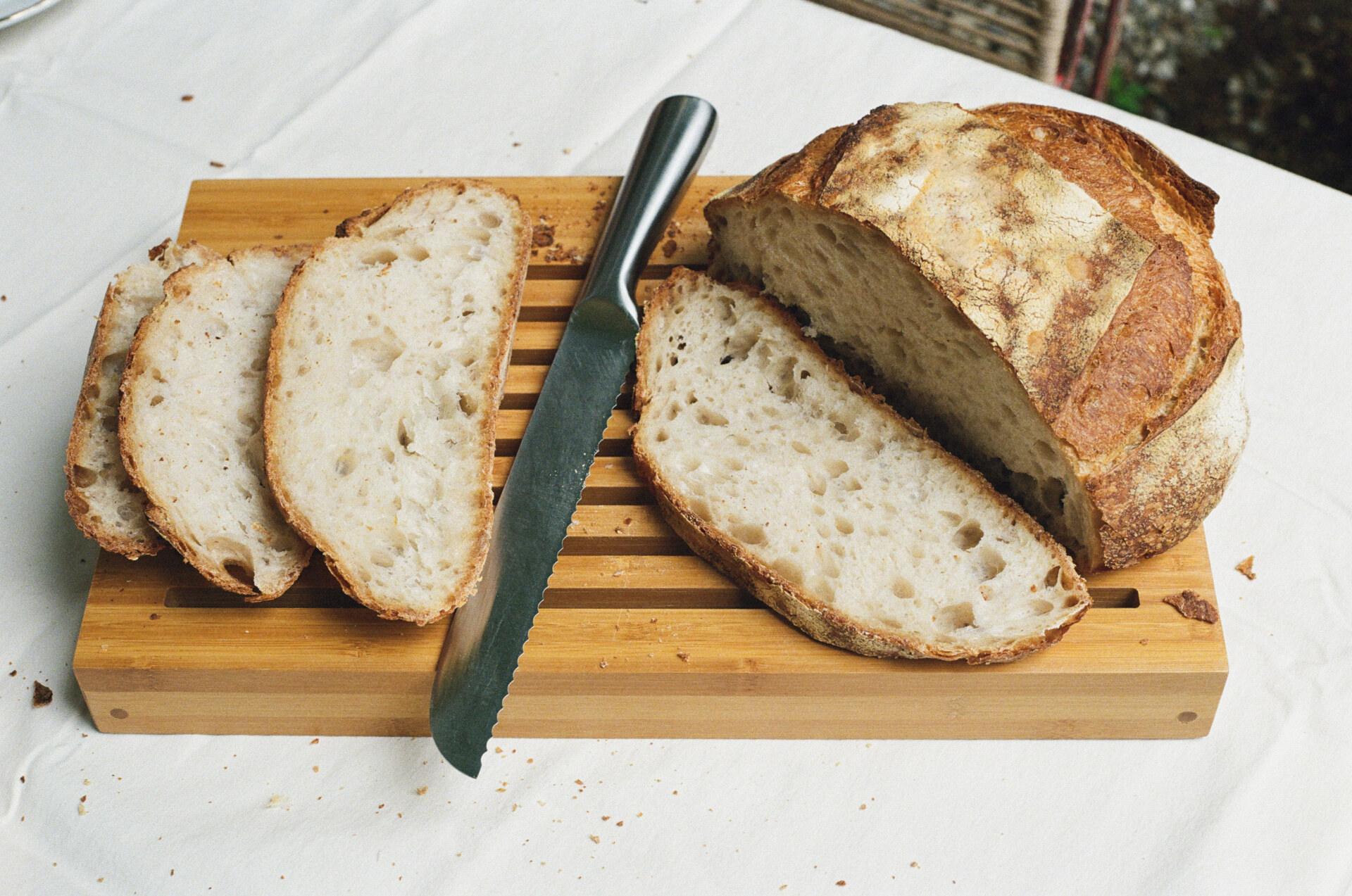
MIGLIACCIO
Typical of the carnival period, this underrated cake is made of semolina, milk, and ricotta scented with vanilla, cinnamon, lemon, and/or orange, earning it the nickname as “the poor sister” of the pastiera. With truly medieval origins, its name calls attention to the Latin miliaccium, a traditional millet bread. Originally, raw millet flour (miglio) and pig’s blood were used instead of semolina, and it was usually prepared in conjunction with the pig slaughter. Pig blood was an uber-nutritious food that helped the lower classes withstand the hardships of the countryside; yet the Catholic Church and bourgeois class associated its use with pagan traditions, so tried to ban it from Campanian cuisine. They were successful (especially when combined with the introduction of food safety laws), so by the end of the 18th century, the pig’s blood was replaced with sugar, semolina, and eggs, transforming the millet bread into something sweeter, more recognizable, and, luckily, less bloody.
Where to Try Our Favorite Version: Pasticceria Capparelli
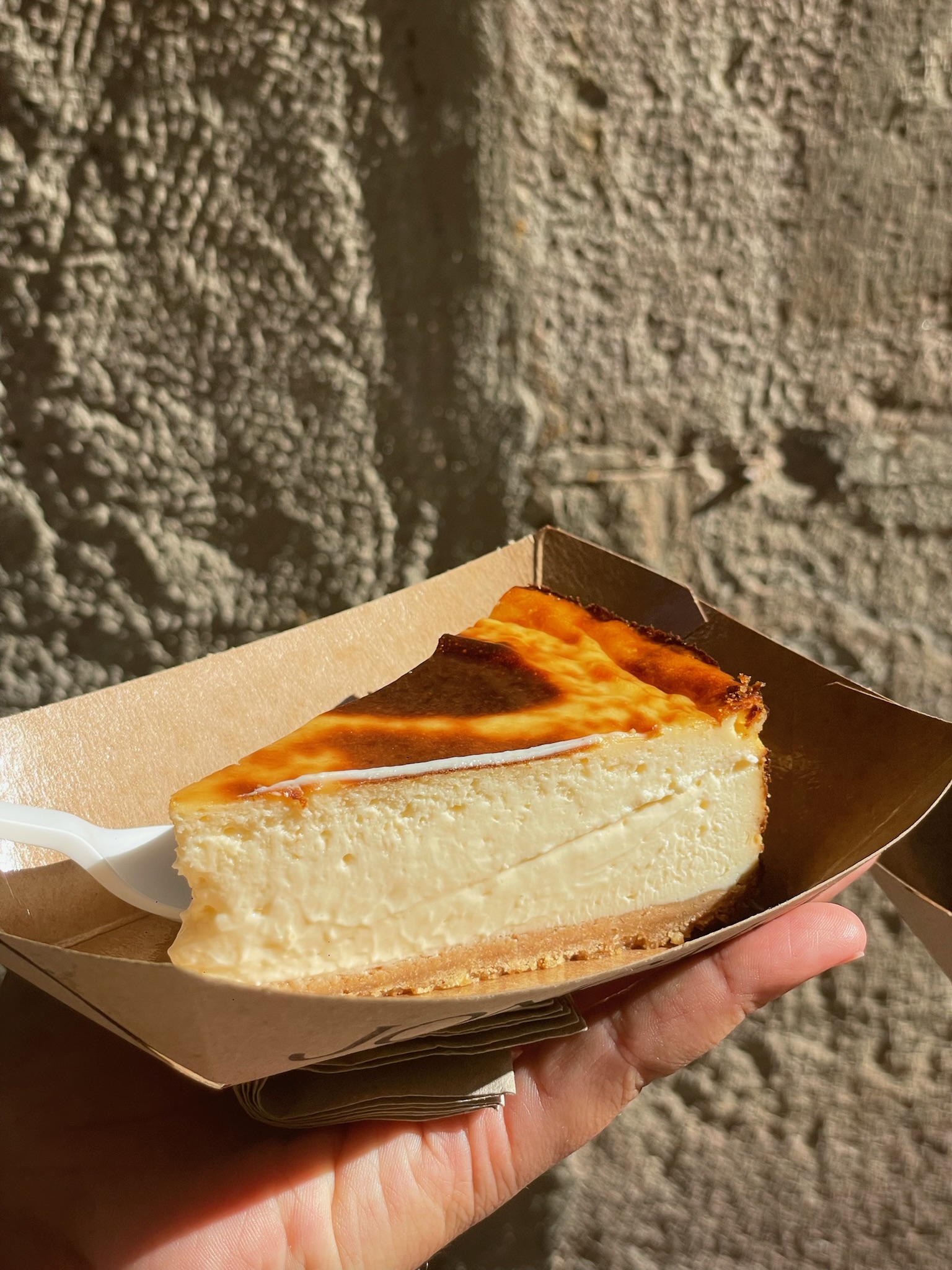
Migliaccio; Photo by Sara Cagle
MINISTERIALI
Ministeriali are small chocolate medallions filled with a creamy liqueur, the recipe of which is still kept a secret. The dessert was created in 1905 by confectioner Francesco Scaturchio as a tribute to Anna Fougez, a 20th century Pugliese actress seen in Fiore Selvaggio (1921). When his chocolate coins rocketed in success, he decided to apply for the official title of supplier to the royal house. In classic Italian manner, the grueling bureaucratic rigmarole at various ministries was so great that he literally named the chocolate ministriali. It was all worth it, for in the end, the King tasted and loved the chocolate, approving Scaturchio’s title. In ironic remembrance, the felucca (a kind of hat) of the ministers is imprinted on the surface of the chocolates.
Where to Try Our Favorite Version: Pasticceria Scaturchio




